

DIWALIISSUE SYDNEY FREE FORTNIGHTLY Vol. 27 No. 1 (2) OCTOBER (2) 2019 indianlink.com.au LINKING INDIA WITH AUSTRALIA SYDNEY • MELBOURNE • ADELAIDE • BRISBANE • PERTH Level 24/44 Market St, Sydney 2000 • GPO Box 108, Sydney 2001 • Ph: 18000 15 8 47 1994-2019 : Celebrating 25 years

















2 OCTOBER (2) 2019 www.indianlink.com.au Bella Vista Castle Hill Auburn Bankstown Blacktown Campsie 8883 0055 9659 6433 0470 687 768 0477 053 053 9621 7711 9789 2676 Chatswood Eastwood Epping Girraween Gordon Gosford 9411 4564 9874 8801 9869 8002 0469 872 857 0433 422 499 0411 332 209 Hornsby Lidcombe Liverpool Merrylands Newington Parramatta 9987 2248 8034 4635 0431 770 867 0481 752 073 9648 0377 0410 783 260 Pennant Hills Revesby Ryde Strathfield St. Marys 0411 305 516 0451 577 008 0490 088 626 9764 2002 0430 139 138 0424 574 398 Mount Waverley St. Marys Open!
























































OCTOBER (2) 2019 3 NATIONAL EDITION





4 OCTOBER (2) 2019 www.indianlink.com.au
PUBLISHER

Pawan Luthra
EDITOR

 Rajni Anand Luthra
Rajni Anand Luthra
SOCIAL MEDIA
Suruchi Sehgal

MELBOURNE COORDINATOR















Preeti Jabbal
CONTRIBUTORS
Sandip
ADVERTISING MANAGER

Shriti Sinha 0410 578 146
ADVERTISING ASSISTANT


Charuta Joshi 02 9279 2004












Diwali traditions, old and new
BY RAJNI ANAND LUTHRA
involved in Diwali (cactus shaped, frog-shaped, or thong-shaped items on your puja thali may not exactly sit with tradition, but you allow it nonetheless for the sake of initiative).
vanquish the dark and bring in the light in a more direct and practical sense. Moving away from stagnant perspectives propels us into higher ways of becoming.

Indian Link is a fortnightly newspaper published in English. No material, including advertisements designed by Indian Link, may be reproduced in part or in whole without the written consent of the editor. Opinions carried in Indian Link are those of the writers and not necessarily endorsed by Indian Link. All correspondence should be addressed to:
INDIAN LINK MEDIA GROUP
Level 24/44 Market St, Sydney 2000
GPO Box 108, Sydney 2001
Ph: 02 9279-2004




Fax: 02 9279-2005








Email: info@indianlink.com.au




Every year after Diwali, my mother-in-law would pick a rupee coin from her puja (worship) platter and put it away with her other Diwali keepsakes. Her Diwali coin collection grew quite large, and included some vintage beauties from decades ago. When she moved to Australia to live with her sons, she divided her Diwali coins equally between her two daughters-in-law. She didn’t tell us to, but we continued the tradition, picking a dollar coin each year to add to the collection.
Diwali is a time of tradition, and not just those that have been passed down to us through the ages. Look at your own Diwali practices and you’ll find some that you have created for your family.
Perhaps you allow your kids to pick their own special candles from the bargain shops, as a way of getting them
Or you preserve the number candles from birthday cakes for the kids to light as their ‘special candles’ (and also as a way of reducing your own waste footprint).
Or you seek out natural candles with no dyes or enhancers.
Perhaps you eschew candles altogether, having reverted to the more sustainable mitti ka diyas (earthen lamps).
Perhaps you’ve moved to buying your special diyas from charity-based operations, to help create opportunity and empower someone in need.
Perhaps mithai has vanished from your Diwali greetings to friends and family, replaced with healthier options of fresh fruit and nuts. Or pot plants.
Perhaps Diwali in your family involves giving to others less fortunate than you.
Your greener, more sustainable and resource-efficient Diwali is a more mindful Diwali – one that allows you to
And so, Diwali can be just as much about evolution and change, as it is about tradition and continuity.
Tradition is necessary in that it values and preserves the collective wisdom of those that came before us. It also provides stability and social identity. At the same time, the past might not always inform the present: given contemporary challenges, change is inevitable, and meaningful change, essential.
Of course, your own new (and progressive) versions of Diwali will pass on to your kids as ‘tradition’.
When my treasured Diwali coin collection ultimately makes its way into my children’s homes, they’ll probably look at it each year and say, check out these vintage Aussie dollar coins from decades ago, and who knows, perhaps add a coin from whatever currency they’re living with.
Have a mindful Diwali.
OCTOBER (2) 2019 5 NATIONAL EDITION
Hor, Gaurav Masand, Petra O’Neill, Dhanya Samuel, Ayush, Shania O’Brien
EDITORIAL
Wish you
a
and
Diwali The Hon Gladys Berejiklian MP Premier of New South Wales Authorised by Chris Stone, Liberal Party of Australia, NSW Division, Level 12, 100 William Street, East Sydney NSW 2011. ADVERTISEMENT
“ “
all
happy
prosperous



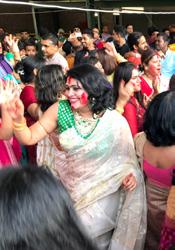


6 OCTOBER (2) 2019 www.indianlink.com.au Diwali books for kids 12 COVER STORY 29 36 18 24 SPECIAL FEATURES 18 FESTIVAL Sydney’s biggest ever Durga Puja 24 KIDS Indian Link’s Diwali Art Contest 29 FIRST PERSON Up close with soccer star Tim Cahill 31 CULTURE DIARIES Read, Listen, Eat, Watch 36 TRAVEL Getting access to airport lounges CONTENTS www.marsdens.net.au CAMDEN CAMPBELLTOWN LIVERPOOL ORAN PARK SYDNEY 4677 7121 4626 5077 9601 5666 4601 1811 9233 1133 • Property Law • Family Law • Estate Planning • Business Law • Criminal Law • Personal Injury Law Experience matters, don’t settle for less!



OCTOBER (2) 2019 7 NATIONAL EDITION Tel: 8625 1936 radhechatpatahouse.com.au facebook.com/radhechatpatahouse.com.au 7/40 Third Avenue, Blacktown NSW S O M E O F O U R H A P P Y C U S T O M E R S D O N ’ T S A Y A W O R D ! SOUTH INDIAN INDO CHINESE & MORE STREET FOOD CURRIES SNACKS PIZZA Happy Diwali 'COS THE FOOD IS FINGER-LICKING GOOD! 'COS THE FOOD IS FINGER-LICKING GOOD!








8 OCTOBER (2) 2019 www.indianlink.com.au 8-12, Station Street East Har ris Park, NSW • Tel: (02) 9687 0024 H A R R I S P A R K 40, Third Avenue Blacktown, NSW • Tel: (02) 9676 7477 B L A C K T O W N P E N D L E H I L L 125, Ballandella Road Pendle Hill, NSW • Tel: (02) 8810 4679 3/8, Douglas Road Quakers Hill, NSW • Tel: (02) 9837 0657 Q U A K E R S H I L L www.radheonline.com.au Like us on www.facebook.com/radheonline H A R R I S P A R K Q U A K E R S H I L L P E N D L E H I L L B L A C K T O W N Sydney's first and largest Indian & sub continental grocer y chain. SHOP ONLINE - HOME DELIVERY ALL OVER SYDNEY METRO O p e n i n g s o o n n e a r M a r s d e n P a r k


OCTOBER (2) 2019 9 NATIONAL EDITION
SHAHRUKH KHAN - DAVID LETTERMAN
Our post on David Letterman’s upcoming Netflix show ‘My Next Guest Needs No Introduction’ featuring an SRK episode caught a fair few eyeballs.

Umesh Sharma wrote: I wish Dave knew about Ayushmann Khurrana and Rajkummar Rao ....
Nazish Fatima wrote: The most fun Dave ever had? Seriously??
Roxy Irani wrote: Sooo gonna watch this. And David Letterman is right when he says about SRK, "There is something about that man".
KEEPING THE CHULHA BURNING
TARINI PURI wrote about Sydney socialite Madhvi Mohindra’s penchant for chulha-cooked meals.

Jasjeet Shergill wrote: I wonder what clay she uses to make the chulha - I have been meaning to make one myself.
Neha P Wadhwa wrote: I would love to taste ...
Navneet Kaur wrote: Where in Parklea? I want a taste!
Bhavin Patel wrote: Good one but who has the time to cook (like this).
Akanksha Dewan Aggarwal wrote: Great coverage and a well-written article. Enjoyed reading Madhvi Mohindra’s quotes. Looking forward to sharing a chulha-cooked meal together one day.
Gracy Jackson wrote: What a story, loved it.
Neeru Saluja wrote: Beautiful story.
WHERE IN OZ
We asked you to identify this ‘secret’ spot. Readers Soona Raj Nair, Vinay Pawar Khandelwal, Choudhary Shika, Jillian Abery, Smita Lawande Acharya correctly identified it as Joint US-Australian missile defence base at Pine Gap, Alice Springs, NT.

Erika Wadlow wrote: Not exactly 'secret' then!
Nalin Sharda wrote: Rasgulla farm.
SAY IT AGAIN
WHERE IN INDIA
Too easy! We asked you to identify this freakiest of tourist attractions. Readers Eshan Rajput, Karthik Nandula, Nitika Sohi, Gaurav Bhardwaj, Nidhi A Kanabar, Bhanu Kothari, Himani Gaurav Sharma, Deepa Sharma, Neha Rathore, Renu Singal, Prateek Sharma, Shayoka's Art Classes and Bhavana Bhatia Masand correctly identified it as Karni Mata temple at Deshnoke. Some 30 km from Bikaner in Rajasthan this temple is famous for its large colonies of black rats that live – and are revered – here.

Durga Puja might be over but celebrations aren’t over in the City of Joy Kolkata.The city celebrated its sixth Nobel Laureate with Abhijit Banerjee being awarded the prestigious award for his contribution to economics..
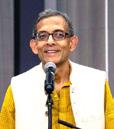
Business Insider India
I’ve got a trickle of Mughal and Bengali blood in my veins. One Dalrymple married the great granddaughter of Nur Jahan’s youngest sister, while another Dalrymple married an Anglo-Indian girl in Bengal.
William Dalrymple, writer and historian

10 OCTOBER (2) 2019 www.indianlink.com.au COVER STORY YOUR
SAY
DIWALI GREETINGS
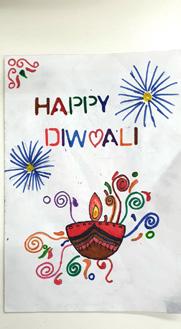
Ashmeet Singh Anand (11) and Sukhmeet Singh Anand (8) of Blackburn Victoria send Indian Link their Diwali wishes.

WHO WORE IT BETTER?
CAPTION CONTEST
What’s Aishwarya Rai Bachchan thinking here?
Sweta Shah wrote: That she is this year’s Halloween Diva!
Monika Patel Kothari wrote: From Miss World to Miss Whorled. I am done and dusted.
Varsha Mehra Arora wrote: New mop shoes. Look great and mop the floor, all at the same time.
Himalaya Spice Centre wrote: My multipurpose shoes are sure to be trendy! They're both fashionable and practical.
Kriti Bhasin Dhillon wrote: I can carry off any dress with confidence.

Yukti Arya wrote: That's right, I'm back and more fabulous than ever!
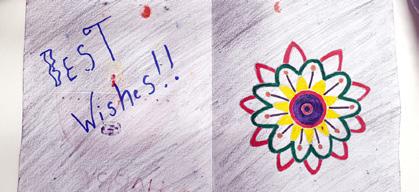
Avani Doshi wrote: Finally done for the day.
Arix Bishnoi wrote: I know my shoes don’t go with my dress, but who cares, I’m a celebrity.
Vyom Doshi wrote: I wouldn't let Priyanka Chopra win the Worst Dress of the Year award.


Clive Lummy wrote: Calm down everyone, I know I forgot to take my slippers off.
Preeti Jabbal wrote: Got my feather duster and got my mop, tick tick... Hang on where’s my broom? (From goddess to domestic).
Varsha Mehra Arora wrote: Alright, you got me. My tailor ran out of kapda. (fabric)
Janaki Rathod wrote: I sure do know how to make an entrance.
Kerren Lumsden wrote: No time for housework so I will mop and sweep the floor as I go!
Farhat Hamid wrote: I don’t think she was thinking at all.
Vandana D'souza wrote: My bedcover looks better on me!
Rishi Singh wrote: Look guys I have done my bit for Swachh Bharat. Now it’s your turn.
Monica Naresh Khuha wrote: Just finished mopping the floor… and already ready for the party!!
Rupali Janbandhu wrote: Sweep and mop it, baby… in shtyle!
Mini Chail wrote: I’m an automatic carwash.
Deepti Kshirsagar wrote: Who says only Ranveer Singh can carry off weird clothes?
Chandni Koesis Singh wrote: A Miss World can pull off a maternity nighty and poodle paws…
Leyla Singh wrote: Stop! I know my shoes aren’t matching.
Natalie Grice wrote: Marshmallow meringue has a new meaning.
Ankita Patel wrote: Sorry. Not my choice... it’s been given to me!
Harvinder Rosy Bhagat wrote: Sorry no time to waste, so let’s get this on. #mum247neverendingchores.
Meha Priyank Shah wrote: Mein jaadu pocha pehen ke chalti hun kun ki mere paon dekhe, bohot haseen hain, zameen par utrenge tau maile ho jayenge.
Mona Channi Bhamra wrote: Punkh hotey to udd aati re…
Mukul Sharma wrote: Koi kuch bhi boley mujha ghanta farak nahi padta.

Lily Gabriel Rodrigues wrote: Finally, what I always wanted… to dress in my daughter's clothes.
India has historically had trouble in implementing macro-solutions at local levels. The work of #NobelEconomicsPrize winners Banerjee, Duflo and Kramer speaks directly to that.
The Wire
When you compare the language used to describe India, the PM's comments (Scott Morrison) send a clear message that the government wants a confined, instrumental, economic relationship with China.
 Clinton Fernandes, Professor of International Relations, UNSW
Clinton Fernandes, Professor of International Relations, UNSW
OCTOBER (2) 2019 11 NATIONAL EDITION
KIARA ADVANI OR GEMMA CHAN IN PRABAL GURUNG?
58%
Ranaut 42%
Katy Perry
Kangana
Diwali in children’s literature
BY RAJNI ANAND LUTHRA
We should all read a kid’s storybook now and then, it has been claimed. Children’s literature is filled with wisdom. It teaches important life lessons - empathy, for instance; the importance of a sense of self; the value of family and friend; to dream big.
That it’s ok to be different.
Young parents have taken frequent recourse to children’s books to teach their kids about upcoming milestones in their life, such as potty training, going to day-care, welcoming a baby sibling, or starting school. They are now finding a growing resource in children’s literature to teach their kids about diversity: that it’s ok to be different, whether that means being a single child, or biracial, or from a blended or same sex or sole parent family, or a person with a disability, or being a person of colour.
In the lead up to Diwali later this month, it’s been pleasing to see an increasing number of children’s books on the Hindu Festival of Light, where there were none available as recently as say five years ago. These come not only from India, but from Indian writers in the diaspora as well as writers of non-Indian background who are exposed to increasing plurality in their own urban centres.
One such book is Chuck Doolan: Let’s Do Diwali by the Sydney-based award-winning writer James Roy. It’s part of a series for young boys, particularly pre-schoolers, and affords the writer a perfect framework within which to tackle issues of significance for boys this age.


“Chook is not exactly your regular hero,” James Roy told Indian Link. “He’s sacred of everything, which is why his name is Chook. For chicken.”
Chook is anxious about walking to school, starting soccer, not having a pet to take to school for Pet Day. Each of these issues is addressed in separate storybooks.
“In Let’s Do Diwali, Chook faces something that’s culturally confronting, as the young Anglo kid who’s taken to something different.”
(Chook and his Indian friend Praj go to a Diwali fair. But big crowds frighten Chook…)

The book presents other young Anglo kids an opportunity to learn about a new culture, in whatever small way, and to accept that people with different worldviews make up our world.
Equally, it offers young Hindu kids in
Australia a chance to look at themselves through fresh eyes, as accepted members of society
“It’s different from what I normally write,” Roy admitted, adding, “Teacher librarians across Western Sydney where I live and work, tell me that it has been popular. If someone has picked it up and read it and been influenced by it, I’m happy.”
Besides exposure to the Indian community in Sydney, Roy grew up in Fiji, and so is well-versed in Indian sensibilities. He has fond memories of Diwali in Suva.
“Fireworks were always readily available, but they were cheaper at Diwali so my Indian friend and I would stock up on them then.”
He has also visited Singapore’s Little India during Diwali, and the Diwali Fair at
Parramatta in Sydney.
What draws him to diverse stories and characters?
“As a writer, for me kids are kids, regardless of where they live or what their background is. They all feel left out sometimes, and so they respond to my stories with empathy. Another book of mine, One Thousand Hills, is about a Rwandan boy affected by the genocide in 1986: I wrote it with Noel Zihabamwe, a member of Sydney’s Rwandan community.”
Clearly fiction has a role to play in teaching kids about the world.
“Certainly,” Roy agreed. “Joseph Stalin once said - and I know he’s not a great one to quote - ‘A million deaths is a statistic, but a single death is a tragedy’. When we tell individual stories, it is much more engaging. I’ve just returned from Japan, where I
James Roy
visited the Peace Memorial Museum at Hiroshima. It lists numbers and data, but its tales of individuals are more stirring.”
He added, “Children are sensitive to being preached at, being spoken down to. Teaching them through fiction carries muchmore weight.”
And so Sadako and the Thousand Paper Cranes will be remembered long after middle school, as will Mao’s Last Dancer, Goodbye Vietnam, Hana’s Suitcase, and Anne Frank’s Diary.
As the world around us becomes more and more diverse, literature from - or based in - other cultures can play a significant role in our primary schools, by helping to explore the world around us, and by breaking down social barriers and promoting understanding and acceptance.
Social psychological research has provided empirical evidence of the many benefits of multicultural literature for students. Those in the dominant culture are equipped with a greater awareness and deeper knowledge that builds an intercultural perspective and allows crosscultural relationships to be strengthened.
On the other end of the spectrum, ie for diverse participants themselves, such texts encourage identity formation, foster selfesteem, and keep at bay feelings of social isolation. Seeing like characters in print (or on screen) not only helps shape who they are but also who they aspire to be. (‘If they can’t see it, they can’t be it’ goes a wellknown slogan in media representation.)
Seeing themselves in literature also makes them more likely to read more.
Across both groups, research suggests that multicultural literature helps students look critically at the world and gain a greater understanding of the global community.
This is a much-needed skill in today’s polarised world.
12 OCTOBER (2) 2019 www.indianlink.com.au
There’s a wide variety of books on Diwali for your child, and they’re not all by Indian writers
COVER STORY
A good variety of books based around Diwali has mushroomed in recent years.
Sometimes it is a straightforward retelling of the tale of the Ramayana (such as in Prince of Fire and Rama and the Demon King), or of the activities on and before Diwali day (such as in My Diwali Book where we follow a little girl as she prepares for and celebrates Diwali).

At other times, it is a Diwali tale told by a popular children’s characterPeppa Pig for instance.
Other instances are when the concept of Diwali is worked into an easily identifiable scenario closer to the life of the young reader. In Diwali, the Festival of Lights Shalu is scared of the dark as she walks home from
DIWALI BOOKS FOR KIDS




the library. In Lilu’s Lantern, Lilugoes to buy a lantern but can’t choose which colour – so she makes her own. In The Diwali Gift, three little monkeys get a mysterious gift. In Rani Saves Diwali, the palace decorator takes ill, and so it is up to the princess to finish the palace decorations. In Lights for Gita, Gita is miserable at the icy cold of her new home Canada during Diwali, and at not seeing the festivities around her. In Deepak’s Diwali, Deepak is miserable because things get lost or broken. These situations provide the perfect backdrop to impart the true meaning or essence of the Festival of Light.
Rhyming words (example Amma Tell Me About Diwali), large colourful illustrations and simple structure in sentences do their job to attract and
retain attention, and aid in making it a pleasurable experience for the young reader as well as the adult narrator.
In many instances, these Diwali stories have served a purpose for the creators of the books themselves. Writer Sana Hoda Sood, India-born but living in Washington USA, produced her book Diwali: A Cultural Adventure for her own son, as did Bhakti Mathur of Hong Kong with her Amma Tell Me series. Books on Diwali written by non-Indian writers reflect the valuing of diversity in modern life, and are sometimes part of a series of world religions or philosophies.
Activity books on Diwali, if you can find them, take the introduction to Diwali a step further, because they are fun as well as educational (see


overleaf). There are colouring books, books to fill in your own little Diwali details, rangoli books with patterns, even card games. They encourage various cognitive skills, and not in a school teacher-y fashion. In Lights, Camera, Diwali! for instance, the young protagonist gets a camera for a Diwali present, and then sets about photographing each Diwali activity in detail.
The learning opportunities are many: they inspire creativity as they teach how to make things of significance during Diwali.The importance of recycling can be an added bonus if using scrap material.
If you can’t find Diwali activity books, make your own by downloading from resources online.

OCTOBER (2) 2019 13 NATIONAL EDITION
Reading
PEPPA’S DIWALI
By Ladybird
On Diwali, Peppa and her family learning all about this Indian celebration. Mummy and Daddy Pig cook up a feast, and Granny and Grandpa Pig bring everyone special clothes to wear. Then it's party time!
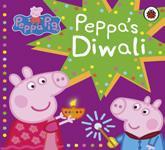
HURRAY FOR DIWALI
By Anita Raina Thapan
(illustrated by Alankrita)
Dive into the world of Gittoo, Gauri, Gannu, Pia, Chia and Nono Paro as they learn about the magical story behind Diwali. A good and to-be-read option to engage kids in learning about Diwali and traditions.
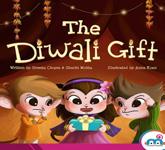
LOTS OF LIGHTS
By Kavita Sahai (author) and Vladividal (illustrator)
A fun Diwali story that explains each day of celebration. Helping children understand Indian culture allows them to be better global citizens, and for Indian children in America, it allows them to learn about their culture in a fresh and relevant way.
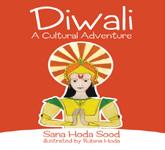

ACTIVITY BOOKS
DIWALI, THE FESTIVAL OF LIGHTS (SHALU)
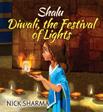 By Nick Sharma
By Nick Sharma
An activity based cartoonsketch with a gripping story line of a frightened Shalu’s walk in the dark street which ends well with a distant lamp guiding the way to brightness and safety.
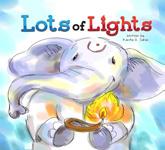
THE DIWALI GIFT
By Shweta Chopra and Shuchi Mehta (illustrated
by Anna Koan)
This Mom’s Choice Award winner elaborates on the adventures of three curious monkeys Suno, Dekho and Jaano relating to a mysterious Diwali package. Help your child explore traditions through attractive illustrations.
DIWALI: A CULTURAL ADVENTURE
By Sana Sood
(illustrated by Rubina Hoda)
Hoda
An action packed brightpictorial story of a brave hero, an evil villain, who fight an epic battle. Young readers learn about Diwali as they follow Ram on his adventure to defeat darkness and despair.
GANESHA’S SWEET TOOTH
 By Sanjay Patel and Emily Haynes (illustrated
By Sanjay Patel and Emily Haynes (illustrated
by Emily
Haynes)
A charming picture book illustrating the fictitious plot of elephant-headed god, Ganesha’s sugar-obsession with a penchant for ladoo, a traditional Indian dessert.
ORIGAMI FESTIVALS
By Robyn Hardyman
Diwali-themed origami activities
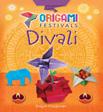
that are explained in full colour and detailed instructions. A unique way to engage children while making them learn more about Diwali.
RANGOLI: AN INDIAN ART ACTIVITY BOOK
By Suma O’Farrell
This award winning art activity book introduces kids to the popular and versatile art India called Rangoli, and offers designs with easy-to-follow coloured to simplify, inform, and inspire.
14 OCTOBER (2) 2019 www.indianlink.com.au COVER STORY
Diwali
LET’S CELEBRATE DIWALI
By Anjali Joshi
(illustrated by Tim Palin)
A culturally diverse and inclusive narration through Harini’spersonal learning at her class circle about Hindu, Sikh, Jain, and Buddhist Diwali traditions!
RAMA AND THE DEMON KING
By Jessica Souhami
The epic of Ramayana through eye-catching illustrations, based on the Indian tradition of shadowpuppetry. A novel execution to convey an age old saga.
PRINCE OF FIRE: THE STORY OF DIWALI
 By Jatinder Nath Verma
By Jatinder Nath Verma
(illustrated by Nilesh Mistry)
An action-packed take of Ramayana with Rama, the Prince of Fire, and his friend’s journey to defeat the demon king of Lanka and return light to the world. Dramatic storyline and vivid illustrations make it a good read for elementary students.
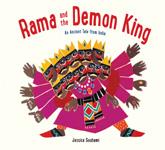
MY DIWALI COLOURING BOOK
By
Moksha Publishing
Not just any colouring book. As you go through the colouring pages, you find that it describes the festival in great detail and there is a lot of information hidden within the book! A great gift for kids of all ages.
LIGHTS, CAMERA, DIWALI!
By Amita Roy Shah
(illustrated by Diane Lucas)
Diwali from the perspective of a young girl who captures the integrated spirit of Diwali through her newly gifted Diwali gift; a camera. Highlight is the sense of family belonging and traditions captured through pictures.
DIWALI: FESTIVAL OF LIGHTS
By Rina Singh
Critically acclaimed author Rina Singh explores the multicultural Diwali traditions. Spiced with festive recipes and enriched by personal stories and vibrant photographs.
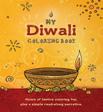
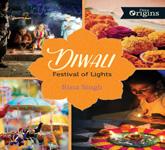
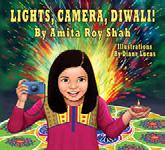
MY DIWALI BOOK
By Rakhee Iyer (illustrated by Gayathri Manikandan, Priya Kuriyan, Taposhi Ghoshal)
Learn how a little girl celebrates Diwali with her family - buying new clothes, preparing sweets, decorating the home with a rangoli, and then lighting diyas and firecrackers.
HOLIDAYS AROUND THE WORLD: CELEBRATE DIWALI

 By Deborah Heiligman
By Deborah Heiligman
This stunning National Geographic book takes young readers on a global tour to visit Diwali celebrations with dynamic photographs and lively text, recipes, a glossary, a card game, a map, a resource list of books and websites, and a note to parents and teachers.
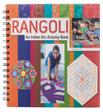

OCTOBER (2) 2019 15 NATIONAL EDITION
art form from offers a variety of coloured lines inspire.









































16 OCTOBER (2) 2019 www.indianlink.com.au CIA - Council of Indian Australians Inc www.cia.org.au Charity Fundraising Number: CFN/2241 Supported by: Gold Sponsors Colourful Festival Stalls • Exciting • Amusement Rides All Day Entertainment Bollywood Cultural Performances Henna Artists • Local Business Offers & Giveaways 7.30pm Laxmi Puja & Maha Aarti with a procession of Fire Lamps Little India F air 2019 STREET FESTIVAL Celebrating Deepavali - the Festival of Lights 12.30 - 10pm This Sat 19 October Wigram Street, Harris Park proudly present EntryFree&10pm FIREWORKS
OCTOBER (2) 2019 17 NATIONAL EDITION
Biggest ever Durga Puja
BANSW’s annual event became a four-day affair this year
BY SANDIP HOR
Early morning drizzles and windy conditions during the start of the recent October long weekend couldn’t dampen the festive mood of the Bengalis in Sydney celebrating the Durga Puja which is undoubtedly the most auspicious occasion in their calendar back home as well as in Australia.

With the Bengali population rising in and around Sydney, this year we saw several entities organising this religious fiesta in different scales. However the largest, just like in previous years, was presented by the Bengali Association of NSW (BANSW) – one of the oldest Indian community organisation in Australia – at Concord High School.

While other associations have been organising the puja only for a day, primarily due to logistical issues, BANSW for years devotes at least two full days.


However this year it was something exceptional when the 1975 - established association, ventured to span it on a megascale for four consecutive days, beginning on Thursday 3 October evening with ‘Anandamela’ – a food festival which in the recent times has become synonymous with Durga Puja worldwide.
“This year our festival has taken a giant leap with many new initiatives,”
Annidita Mitra the current President of the Association, told Indian Link. “For the first time in our history we celebrated for four days, most importantly matching the dates precisely as stipulated in the religious almanac.”

First time as well, a drummer called ‘dhaki’ from India flew over to play Dhak – a traditional drum the beating of which is an integral part of the festival. Entertainment in the evenings included a fashion show and cultural performances with notable singers and dancers from India.
“We have also implemented initiatives to make this large-scale event environmentally clean,” Annindita revealed.
With pomp and grandeur at its peak,
anyone who was present at the venue during the four-day period will possibly have no hesitation to concur with this.
Resonating with the festive spirit, the Concord High School arena adopted a different look with hundreds of devotees crowding the indoor and outdoor space to its capacity.
Inside the main hall, the images of the Goddess Durga and her four children Ganesha, Karthik, Lakshmi and Saraswati were ornamented on the main stage with aircraft and flowers. With the priest chanting the religious mantras in high notes and devotees praying, the ambience was pretty much like the inside of a temple. Huge quantities of fruits, sweets, flowers
and incense sticks were among the offering. After completion of the rituals the food was distributed as ‘prasadam’ symbolising her blessings to the disciples. In addition, vegetarian lunch cooked by in-house volunteers were served all three days.
Outside the hall, the scene was like a carnival, with ice cream vans, coffee counters and stalls of several kinds from food and fashion to magazines, books and Telstra - all doing brisk business. With the ladies swirling their sarees, children playing, youngsters chatting, some dancing to the high-pitched music and elderly reminiscing the nostalgic moments over a cuppa, the panorama aptly resembled a scene of happiness and social harmony.
According to the organisers, over ten thousand people passed through the arena during the four-day period. There were many from other Indian communities and local Aussies as well proving it to be truly a multicultural affair. Several dignitaries dropped in, among them Fiona Martin (Federal Member for Reid), Jodi McKay (NSW Leader of the Opposition and State Member for Strathfield), Manish Gupta (Indian Consul General in Sydney), Chandru Appar (Deputy Indian Consul General in Sydney), Sameer Pandey (Counsellor, Parramatta Council), Pranay Kumar CEO (State Bank of India) and Sreeni Pillamarri (UIA President).
This big-budget event is funded by BANSW with donations and sponsorship from the members, supporters and some private businesses.
18 OCTOBER (2) 2019 www.indianlink.com.au 2019 www.indianlink.com.au
FESTIVAL

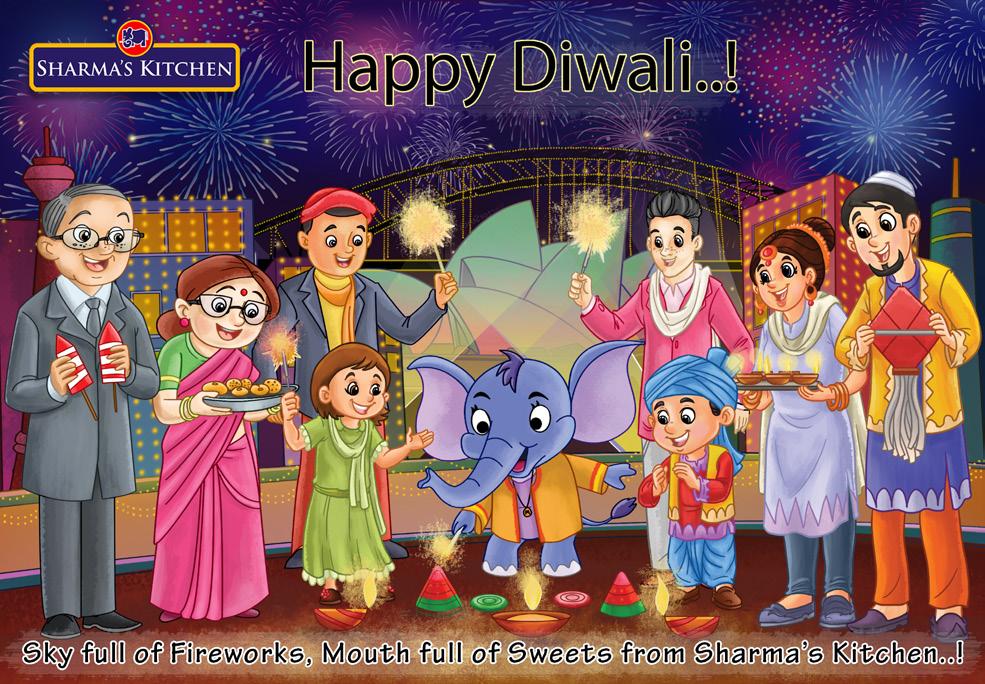
OCTOBER (2) 2019 19 NATIONAL EDITION
WHAT’S ON
FESTIVAL
Little India Street Fair
19 Oct (12.30pm - 10.00pm) CIA celebrates Diwali with a street fair on Wigram St, Harris Park.
Details 0423 894 531
AHIA Diwali
Sat 19 Oct (7.00pm onwards)
Australian Hindi Indians Association Inc presents its annual Diwali gathering at The Sapphire Room, Croatian Club, 921 Punchbowl Rd, Punchbowl. As AHIA marks its silver jubilee this year, the theme for the evening is: Silver.
Details 0411 967 374
Penrith Durga Puja
Sat 19 Oct (10.00am - 5.00pm)
Swagatam organises Durga Puja celebrations at Thornton Community Centre, 61 Lord Sheffield Drive, Penrith. Main features include Puja, kids’ activities, lunch, cultural program and sindhurkhela.
Hindu Council Deepavali
Sun 20 Oct (11.00am - 9.00pm)
Bella Vista Farm, Norwest Boulevard and Elizabeth Mac Arthur Drive, Bella Vista.
Details www.hinducouncil.com.au
Opera House Diwali
Mon 21 Oct (6.30pm onwards) The Government of NSW will have the Sydney Opera House lit up for the Hindu Festival of Lights, Diwali.
Diwali at Gordon Library
Tue 22 Oct (5.00pm - 6.30pm)
Ku-ring-gai Council event for young children and families. Venue: Gordon Library, 799 Pacific Highway, Gordon. Bookings essential. Details 02 9424 0120. Details www.kmc.nsw.gov.au
Winston Hills Mall
Thur 24 and Fr 25 Oct (10.00am - 2.00pm daily) Outside Coles Supermarket. Events include fresh food sampling, henna body art and roving Bollywood performances by Nartan Institute of Performing Arts.
Cumberland Council Diwali
Sat 26 Oct (5.00pm - 9.00pm)
An evening of entertainment, live performances, rides and cultural fun at Station St Wentworthville.
Details 02 8757 9000
Kids’ Diwali
Sun 27 Oct (10.00am - 4.00pm)
BAPS organises a Kids’ Diwali event including rides, games, cultural shows, food stalls, exhibition. Venue: Grand Pavillion, Rosehill Gardens, James Ruse Drive, Rosehill.
Details 02 9760 2277
Hindu New Year & Annakut Festival (Festival of Gratitude)
Mon 28 Oct (11.00am - 5.00pm)
BAPS Swaminarayan Mandir, Sydney presents Annakut at Rosehill Gardens, James Ruse Drive, Rosehill. Details 02 9760 2277
Chinmaya Mission Diwali
Sun Oct 27 (5:00 pm - 7:00 pm)
Chinmaya Sannidhi (Ashram) 38 Carrington Rd, Castle Hill. Details 02 8850 7400
IIT Alumni Diwali
Sat 2 Nov (6.00pm – 10.30pm) The IIT Alumni Association of Australia celebrates Diwali at Le Beach Hut Restaurant, 179 Russell Ave, Dolls Point. Details www.iitaa.org.au
Telugu Deepavali
Sat 2 Nov (4:00 pm - 10:00 pm)
Telugu Association Inc Sydney celebrates Deepavali Vedukalu 2019 at Durga Devi Temple Auditorium, 21 Rose Crescent, Regents Park. Details www.sydneytelugu.org
Deepavali at Strathfield
Sun 3 Nov (11.00am - 5.00pm)
Strathfield Park, Homebush Rd, Starthfield. Features include cultural program, merchandise stalls, food stalls. Details www.hindicouncil.com.au
LECTURE-DISCUSSION
Leader | Leadership | Nation
Sat 19 Oct (2.00pm - 4.30pm) Indian Overseas Congress Australia presents a discussion to mark the 150th birth anniversary of Mahatma Gandhi and the 115th birth anniversary of former Prime Minister Lal Bahadur Shastri. Key speakers include Anil Shastri (son of Lal Bahadur Shastri, former union minister and chairman LBSIM) and Prof Uma Mesthri (scholar and great granddaughter of Mahatma Gandhi). Venue: Theatre EA.G.18, Western Sydney University, Rydalmere.
Details 0431 106 392
William Dalrymple
Thur 31 Oct (6.30pm - 7.30pm)
UNSW Centre for Ideas presents writer and historian William Dalrymple talking on ‘The Relentless Rise of the East India Company’ based on his new book The Anarchy. Venue: Sir John Clancy Auditorium, High Street (Gate 9), UNSW Kensington.
Details 02 9385 1000 or email centreforideas@unsw.edu.au
CLASSICAL
Krishnaarpanam
Sun 20 Oct (5:0pm - 8:00 pm)
Marking its 10th anniversary, performing arts organisation Silambam Sydney, presents Bharatanatyam production Krishnaarpanam, based on the lilas (playful pastimes) of Lord Shri Krishna. Venue: UNSW Sydney, Entry Gate 14, Barker St Kensington. Details www.arunagandhi.com/ silambamsydney
COMMUNITY
Punjabi Mela: Himmat Sandhu & Labh Heera
Fri 18 Oct (6:00pm - 11:00pm)
Bowman Hall, 35 Campbell St Blacktown. Details 0404 724 923
Sakhi Ga Sakhi
Sat 19 Oct (10.00am - 6.00pm)
Marathi Association Sydney Inc. (MASI) presents Sakhi Ga Sakhi Venue: Durga Auditorium, Regents Park
STAGE
Taj Mahal: A Timeless Love Story Sat 26 Oct Swastik Productions presents Taj Mahal in dance, Riverside Theatre Parramatta. Details www.tajmahalsydney.com
Atul Khatri: Stand-Up Comedy
Fri 1 Nov (7.00pm onwards) The Comedy Store, 122 Lang Road, Sydney. Details Premier Tickets.
Saaz Band for Saaya Fundraiser
Sat 2 Nov (6.00pm - 8.30pm)
Charity organisation Saaya Touching Lives and Australian Telangana State Association Sydney present a night of Bollywood music with Saaz Band, at Pacific Hills Christian School, 9 – 13 Quarry Rd, Dural. Details www.saaya.org.au
CLUB / ENTERTAINMENT
Diwali Rooftop Party - Bhangra and Bollywood
Sat 19 Oct (9:00pm onwards) Home
The Venue, 1-5 Wheat Road, #101, Darling Harbour. Details 02 9266 0600
Blockbuster Diwali Cruise
Fri 25 Oct (9:00 pm onwards) King Street Wharf 9, Harbour Street, Sydney. Tickets bollywoodclubx.com
Diwali Dhamaka
Sat 2 Nov (2.00pm - 6.00pm)
Featuring Ramdas Padhye (puppetr show) and Shabdanche Café (song and poetry). Venue: Sydney Baha’i Centre, 107 Derby St, Silverwater. Details Premier Tickets.
Kareena Kapoor
Sat 2 Nov (7.00pm - 11.00pm) Catch
Kareena Kapoor at The Diamond Showroom, Blacktown Workers Club, 55 Campbell St, Blacktown. Details www.drytickets.com.au
YOGA AND MEDITATION
Lunch-time yoga and meditation
Mondays Art of Living Sydney presents free lunch-time Yoga sessions from 12:30 pm - 1:30 pm at Level 2, 265 Castlereagh Street, Sydney. Thursdays The Brahma Kumaris Australia present meditation sessions from 12.15pm - 1.00pm at the Indian Cultural Centre, Level 2, 265 Castlereagh Street, Sydney.
Details 02 9223 2702. Register at icc2.sydney@mea.gov.in
Yoga at Spirit of India
Saturdays and Sundays, 15-week Yoga course. Also check out special yoga classes for children (5-12 years), adults and senior citizens (55 plus). Venues at Wentworthville, Quakers Hill, Pennant Hills, Auburn, Epping, Homebush, Ryde. Free Yoga class every Wednesday (5.30pm - 7.00pm) at Indian Consulate Cultural Centre, Level 2,
265 Castlereagh St, Sydney. Free meditation every Saturday (8.30am9.15am) at Wentworthville. Details www.spiritofindia.org or call Suresh 0412 202 182 or Raja 0402 789 109.
Sahaja Yoga: Music and Meditation
Free sessions at multiple venues across Sydney. Details www.sahajayoga.com.au
SENIORS
AASHA Regular meetings and catch-ups for seniors across Sydney. Programs feature yoga, music, dance, games, health and tech presentations, health checks and light lunch. Details 0412 786 569
Crows Nest: Bollywood morning tea for seniors.
Third Wednesday of the month (10.00am - 12.00 noon)
2 Ernest Place Crows Nest, Hornsby: Stay Well Live Well seniors group Second and fourth Fridays of the month (11.00am - 2.00pm)
Hornsby Youth and Community Centre, Corner of Muriel and Burdett Streets.
Blacktown: Stay Well Live Well seniors group
First Wednesday of the month (11.00am - 2.00pm)
Blacktown WestPoint Shopping Centre, Level 4, Opposite gym, Community Room
Wentworthville: Stay Well Live Well seniors group Fourth Saturday of the month (12.00 noon - 4.00pm)
Wentworthville Community Centre, 2 Lane St, Wentworthville.
SPIRITUAL
550th birth anniversary of Guru Nanak Dev: Divine Steps Festival Sun 10 Nov (10.00am - 4.00pm) Sikh Youth Australia together with Sikh Sangat and Sikh organisations of Sydney, present the Divine Steps Festival, an event celebrating Guru Nanak Dev Ji's 550th Birth Anniversary and his universal message.
The Divine Steps Festival looks to share and celebrate the essence of Guru Nanak Dev Ji by bringing together Sikhs and other faith groups in a spiritual festival honouring his life and Universal message.
The Festival will feature:
• Divine Music Concert of spiritual music and performances from Sikh (Dya Singh World Music group) and other faith traditions.
• Langar (free vegetarian food and drinks)
• A showcase of the history of Guru Nanak Dev Ji and the Sikh faith
• Free health checks (courtesy of Culture Care)
• Jumping castle and entertainment for the whole family
• Fundraising for selected charities –raffles, silent auction
• Sponsored charity udahasi walks Details 0401 055 271 or Facebook/DivineStepsFestival
20 OCTOBER (2) 2019 www.indianlink.com.au
To add your notice email media@indianlink.com.au
All your Diwali needs at Woolies
Woolworths helps customers celebrate Diwali with expanded Indian product range

Diwali preparations are now made easier and more convenient with special South Asian products available in selected Woolworths stores across the country. As a traditionally joyful time, Woolworths has embraced the importance the role food plays during Diwali by offering tailored products for the Indian community, available in over 200 stores nationally and also online.
The range of products includes snacks, spices, rice and other cooking ingredients to help you create your special dishes during the Diwali celebrations. Specially sourced to not only offer popular food items from home, the products selected also create greater convenience for the Indian community in Australia when preparing for their upcoming festivities.
Popular Indian snacks such as Haldiram sweets, Britannia and Parle biscuits, Bikano and Haldiram snacks are available, providing the opportunity to easily enjoy these little treats for Diwali.
For those short on time, MTR Tasty Delights Ready to Eat meals are available, along with popular Haldiram’s frozen foods and sweets such as Kaju Katli and Motichoor Ladoo. Accompanied by popular beverages such as
Wagh Bakri, Taj Mahal tea and MTR Badam Drink Cans, Woolworths has customers’ meal, snack and gifting needs covered this Diwali.
Lastly, special prices are offered on key household ingredients such as India Gate Basmati rice, Pillsbury Chakki Atta flour and Sundrop Sunflower oil, used for everyday cooking.
Woolworths Director of Buying, Peter McNamara said, “We understand Diwali is an important time for family gathering, celebration and feasting. We have been working on continuing to expand our Indian product range, to meet the needs of the growing Indian community in Australia. With Diwali, we have the right variety of local and international products offering great value to help our customers during their busy preparations leading into the Diwali festivities.”
“We would also like to wish the community a very happy Diwali,” he added.
The Diwali product range varies from store to store and the Diwali Sale is available from now until Tuesday 29th October 2019, unless sold out earlier.
For more information on Woolworths stores that stock the Diwali range, head to www. woolworths.com.au/diwali.
PW was first established around the end of 2016, while real estate market already started to cool off and go down. Within two years till now, our full time sales team has grown to almost 50 people, with three offices located in City / Macquarie Park / Castle hill, and having a numerous regional offices planned under way for suburbs of strategic importance as Rhodes / Burwood / Hurtsville / Chatswood Our sales revenue is already over $150 million, with over 400 properties managed
At PW, we leverage our most comprehensive training mechanism including featured one-to-one mentoring and coaching from PW Super Sales Star, to ensure you can learn things u can't access elsewhere and develop your full potential.

We fundamentally believe marketing is the very key to any sales agent's success! Our heavy investment in marketing is generating a large amount of customer leads to be distributed among our sales team, and a premium branding effect to positively influence our prospects . With PW branding, good exposure and reputation in market place, it becomes so easy for our sales to succeed.
Are u ready to live up to your full potential, be someone different, be someone rich, be someone famous, be someone your family, friends, the society can look up to?
Please contact Jenny Wang and meet our team at PW Realty!
Jenny Wang 0416 847 500 jenny.wang@pwrealty.com.au
•
•
OCTOBER (2) 2019 21 NATIONAL EDITION ADVERTORIAL
Sales Wanted International Migration Centre Contact us for all your Australian Visa needs • Skilled – independent and Australian sponsored visas • Independent and sponsored visas for regional areas • Student visas and graduate skilled visa
Fiancé, partner and other family visa applications
•
Business skill – Temporary, provisional & permanent visas
Bridging visas
•
Applications for Review and Appeals Tribunals CONTACT DETAILS Amrit P Jagota (MARN 0532014) Ph 0414 338 423 Manvinder K Josan (MARN 0962796) Ph 0410 719 375 We have moved to new address Suite 2, Level 1, 57 – 59 Dunmore Street Wentworthville NSW 2145 Phone 02 86287336
Economics Nobel for Prof. Abhijit Banerjee
Indian-origin MIT professor Abhijit Banerjee, his wife and one-time PhD student Esther Duflo, and Harvard professor Michael Kremer have been awarded the 2019 Nobel Prize in Economics for their work which has "dramatically improved our ability to fight poverty in practice."

The trio's work has focused on the poor communities in India and Africa, and their research show which investments in key areas like education and healthcare are worth making and have the biggest impact on the lives of the poorest people.
Born in Mumbai in 1961, Bannerjee is one of the leading development economists and is presently working as a professor of economics at the Massachusetts Institute of Technology (MIT).
Author of a large number of articles and books, Banerjee graduated in science from the Calcutta University in 1981 before moving to the Jawaharlal Nehru University in New Delhi from where he completed his MA in 1983. He received his PhD from the Harvard University in 1988.
Announcing the Nobel Prize in Economic Sciences, the Royal Swedish Academy of Sciences said that the research conducted by this year's laureates has considerably improved the ability to fight global poverty.
"In just two decades, their new experimentbased approach has transformed development economics, which is now a flourishing field of research," the Academy said.
In 2003, Banerjee founded the Abdul Latif Jameel Poverty Action Lab (J-PAL) along with Esther Duflo and Sendhil Mullainathan, and he remains one of the lab's directors.
Born in 1972, Duflo is the second woman and the youngest person to be awarded the Prize in Economic Sciences, which was not among the five original Nobels and was instituted by the Swedish central bank "in memory of Alfred Nobel" in 1969.
Also a professor at the MIT, Duflo said she is "humbled" by her success in winning the Nobel Prize for economics and hopes it will "inspire many, many other women."
Banerjee is a past President of the Bureau for the Research in the Economic Analysis
of Development, a research associate of the NBER and a CEPR research fellow, international research fellow of the Kiel Institute, a fellow of the American Academy of Arts and Sciences and the Econometric Society, and has been a Guggenheim Fellow and an Alfred P. Sloan Fellow and a winner of the Infosys prize.
He is the author of a large number of articles and four books, including Poor Economics, which won the Goldman Sachs Business Book of the Year award in 2011.
He is the editor of three more books and has also directed two documentary films. He also served on the UN Secretary-General's high-level Panel of Eminent Persons on the post-2015 Development Agenda.
In 2011, Banerjee was named one of Foreign Policy magazine's top 100 global thinkers. His areas of research are development economics and economic theory.
Noted historian Ramachandra Guha said that Banerjee's ground-breaking scholarship apart, he is also a superb cook and a connoisseur of Hindustani classical music.
"He represents the best of Indian culture and scholarship, while always being open to what the world has to offer," Guha wrote on Twitter while congratulating the Nobel laureate.
Indian economy in 'tailspin' warns Nobel laureate Banerjee
The newly-minted economics Nobel laureate Abhijit Banerjee has warned that the Indian economy is going into "a tailspin" and his prescription is for the government to focus to increasing demand rather than on deficits or stability.
“When the economy goes into a tailspin, you don't worry so much about monetary stability: you worry a little more about demand, the demand is a huge problem right now in the economy," he said at a news conference at the Massachusetts Institute of Technology (MIT) in Cambridge after his prize was announced.
The fall in consumption was a warning sign for India, he said while answering a question about the state of the Indian economy.
He said, "The economy is doing very badly in my view. One of the numbers that just came out is the National Sample Survey which
comes out every one and a half years or so and it gives you the average consumption in urban and rural areas in India.We see in that, that between 2014-15 and 2017-18, that number has slightly gone down. That's the first time such a thing has happened in many, many years. So that is a very glaring warning sign."
In this scenario, he said that the government was concentrating on deficits and monetary stability when the focus should be on increasing demand.
"The government has a large deficit, but right now, it is aiming to please everybody by pretending to hold onto some budgetary targets and monetary targets," he said.
He criticised Prime Minister Narendra Modi's government over the use of data.
"There is enormous fight going on in India about which data is right, and the government has a particular view that all data that is inconvenient to it is wrong," he said.
"Nonetheless, this is something that even the government is recognising that there is a problem," he added.
Banerjee was reflecting the views of many economists who have questioned the reliability of government data, among them former government chief economic adviser Arvind Subramanian, who asserted in a Harvard University paper that India's growth rate may have been overstated by 2.5 per cent for each of the years between 2011-12 and 2016-17.
Banerjee was one of the advisers to the Congress Party in this year’s elections in moulding the Nyuntam Aay Yojana (NYAY) programme it proposed to give a minimum guaranteed income to 20 per cent poorest people or 50 million families in India.
Banerjee is the Ford Foundation International Professor of Economics at MIT and his wife, co-recipient of the Nobel Prize for Economics, Esther Duflois the Poverty Alleviation and Development Economics Professor there.
They shared the prize with Harvard professor Michael Kremer for "their experimental approach to alleviating global poverty," according to the Royal Swedish Academy of Sciences.
Earlier in response to a question about Latin America, Banerjee had said that since they worked on hard evidence and had not
studied that area and done the homework he could not give an opinion.
So, Banerjee's wife teased him amid laughter about answering the question about India saying, "He has an opinion."
He replied, "That is a statement not about what will work in the future but about what is going on now. That I am entitled to have an opinion about."
Asked for his response to being the sixth Nobel laureate with a Kolkata connection, starting with Rabindranath Tagore in 1913, he said, "I assume they are all much more distinguished than me.”
Mumbai-born Banerjee received his BSc from University of Calcutta in 1981, his MA from JNU in 1983 and his PhD from Harvard in 1988.
The first person of Indian origin to win the Nobel Prize of Economics is Amartya Sen, and Banerjee follows in his footsteps by researching poverty-related topics like him. Banerjee is at least the tenth person of Indian origin or citizenship to win a Nobel Prize.
Speaking about their research in India, Duflo said that they wanted to find out why parents did not vaccinate their childrenand what would motivate them.
They picked an area in Rajasthan and randomly selected 120 villages for three types of programmes, one where nothing new was done for vaccination, another where regular vaccination camps were held and a third where there was distribution of lentils before vaccination and plates afterwards to parents, she said.
While the rate of vaccination stayed at five percent for the villages with no special programmes, it rose to 12 per cent when camps were held and soared to 39 per cent in the villages with the incentives, she said. It gave an insight into how people make decisions and how social programmes can be made to work, she concluded.
A very big day for us, says
Abhijit Banerjee's alma mater
Calling it a very big day for the institution, the South Point High School in Kolkata rejoiced at its alumnus Abhijit Vinayak Banerjee getting the coveted Nobel Prize for Economics.
"This is a very big day for us. No school can expect more from its students," SPHS Principal Rupa Sanyal Bhattacharya told a hurriedly-convened media meet at Kolkata. Banerjee passed his higher secondary exam from the school in 1978.
"This was expected,” said a beaming Bhattacharya. “For some years, we were hearing that he was being considered for the coveted award for his work."
South Point, the first co-education school in Kolkata and still one of the leading schools in the metropolis, found its name in the Guinness Book of Records (1984-1992) as the world's largest school in terms of the number of students.
Bhattacharya said Banerjee was still in touch with the now retired teachers of the school who taught him. "He replies to e-mails
22 OCTOBER (2) 2019 www.indianlink.com.au INDIAN NEWS
Massachusetts Institute of Technology professors Abhijit Banerjee and his wife and colleague Esther Duflo speak to the press after being announced as winners of the Nobel Prize in Economic Sciences for 2019 along with their colleague Michael Kremer.
Photo: AP
from his teachers till date, despite his busy schedule at the MIT.”
"This is a great quality - a quality of a great human being," she said.
The greening of Delhi’s Gurdwara Bangla Sahib
Gurdwara Bangla Sahib has decided to ban use of all types of plastics in the shrine complex to commemorate 550th birth anniversary of Guru Nanak.

The heritage Sikh shrine, located in the heart of the national capital, has banned disposable plates, glasses, spoons, thermocol cup and plates, and switched to steel bowls for serving drinking water and steel plates for serving langar (community food) to devotees.
According to a statement, it's also taking several other eco-friendly initiatives to become the cleanest place in the Delhi.
Around 5,000 poly bags/thermocol cupplates used for distributing "prasad" and fruits to devotees daily have been replaced with eco-friendly jute bags and leaf bowls since October 2.
The DSGMC has set up a recycling plant, capable of handling two tonnes of flower, langarwaste and dry leaves a day, to make organic manure and vermicompost.
The plant has been commissioned on an experimental basis on the zero-waste model. It will be fully commissioned later this month. It will process floral waste, minimise environmental footprint besides providing employment opportunities and resources for the shrine.
The DSGMC has shifted to piped natural gas (PNG) for preparing langar for around 35,000 persons daily. Machines have been installed in the langarhall to feed 1,500 people at one go, clean the area, for washing utensils to save water and achieve the best hygienic standards.
He said at all the open places in the gurdwara complex saplings would be planted. A solar system has been installed to check carbon emission and provide clean energy.
Karnataka's legendary saxophonist Gopalnath passes away
Karnataka's legendary saxophonist KadriGopalnath died at a private hospital in Mangalore on Fri 11 Oct. He was 69.
"Gopalnath died due to cardiac arrest after he was admitted to A.J. Hospital on Thursday when he complained of breathing and back pain," a state information department official told IANS.
Gopalnath is survived by his wife Sarojini, sons Manikanth and Guruprasad and daughter Ambika Mohan.
Manikanth is a noted music director.
Hundreds of the musician's admirers and followers flocked to Gopalnath's house at Padavinangady to pay their last respects to him and console the bereaved family.
Born on December 6, 1949 in a Dakshina Kannada village, Gopalnath was son of flute (nagaswara) expert Taniyappa and learnt to play on saxophone from his guru N. Gopalakrishna Iyer of Kalaniketan over five
decades ago.
Fascinated by the sound of the saxophone when he heard it for the first time at a concert by the Mysuru palace band, he decided to practice on it and became an expert in a decade.
In recognition of his outstanding performance and contribution to Carnatic music, he was conferred Padma Shri, Sangeetha Nataka Academy award and Karnataka Kalasri award.
Gopalnath was the first Carnatic musician to play at the BBC Promenade concert in 1994 in London's Royal Albert Hall. He also played the saxophone at jazz festivals in Prague, Berlin, Mexico and Paris as well as in Mumbai and Chennai.
Gopalnath also played for Carnatic music programmes of the state-run All India Radio for years, first at Mangalore and later in Chennai. He also performed at several state-sponsored concerts across the country during his heydays.
Mourning Gopalnath, Prime Minister Narendra Modi tweeted that the remarkable musician epitomised excellence.
"Blessed with exceptional diligence and talent, Gopanath made a valuable contribution to Carnatic music. His works were popular across continents. Pained by his demise. My thoughts are with his family and admirers," he wrote.
In a condolence message, Chief Minister B.S. Yediyurappa said the Carnatic exponent had adapted a foreign instrument like saxophone to the Indian classical music and entertained connoisseurs with his enchanting performances.
"In his death, the world of music has lost a great musician," he added.
A deep love for Tamil and Sanskrit: University of Chicago’s Whitney Cox
He's a master of Sanskrit and Tamil and is currently translating two of their ancient texts. He has also conducted extensive research on Shaivism and the linkages in medieval times between South India and Kashmir. Yet, Whitney Cox, an Associate Professor in the Department of South Asian Languages and
Civilizations at The University of Chicago, modestly says he hasn't "mastered anything" and "there will always be more things to learn".
His recent research has touched on a wide spectrum of issues, including the political history of the Chola dynasty; the centuries-long connections between the southern reaches of the sub-continent and the Kashmir Valley in the north; the transformation of late-medieval textual scholarship; Sanskrit and Tamil literary theory; modes of pre-modern historical writing in Sanskrit; and the pan-Indic traditions of the tantric worship of Shiva.
This has resulted in two books Politics, Kingship and Poetry in Medieval South India: Moonset on Sunrise Mountain (Cambridge) and Modes of Philology in Medieval South India (already published in Europe and the US and soon to be published in India by Primus).
"The first of these is about a royal succession in the late 11th century Chola dynasty: the story about it had fascinated me since I was a young student," Cox told IANS. "There was a Chola king called Kulottunga, who had this mysterious early life before coming to the throne and, some suggest, might have murdered his cousin to become king. While I don't think he did that, the way that the politics of his kingdom were reconfigured around his ascent was both possible to trace in detail, and very consequential: it was a sort of tipping point in Chola history.”
“The second book is about how scholars made and reorganised knowledge in medieval times. The interest for me is that some of these kinds of textual scholarship - for instance, the composition of the new Puranas or tantrascan't easily be understood through received western categories: among other things, the texts anonymous, without attribution to a human author. But they were rigorous and careful, and scholars of the time (such as the great Shrivaishnava philosopher Vedanta Deshika) were aware of the problems that this sort of anonymous writing created for scholarship.”
"Once again, there are connections between South India and Kashmir at work here, which is where this research project first began," Cox explained.
How did his interest in such a wide genre
develop?
"I began studying Sanskrit when I was in university. I had been interested in history my whole life, and I had spent a good amount of time as an undergraduate studying Europe, especially classical and medieval Europe.”
Detailing his experiences on his visits to India as part of his research, which is an ongoing process, he said most of his time is spent in the far South, especially in Tamil Nadu and also in Kerala and Karnataka.
"Chennai, where I've lived the most in India, is certainly one of my favourite cities in the world. Ideally, I would like to visit India every year, but this is difficult with my professional and family responsibilities these days, so my visits tend to be for less time," Cox said.
Dubai-based Indian buys tickets to send prisoners home
A Dubai-based Indian businessman purchased one-way flight tickets for 13 prisoners facing deportation to help them fly back home.
The prisoners from Pakistan, Bangladesh, Uganda, Afghanistan, Nigeria, China, and Ethiopia were released on this month upon completion of their jail term.
"Unfortunately, the men could not afford to pay for the air tickets. Dubai Police works with PCT Humanity on several charitable activities, including blood donation campaigns. Now, we are providing travel assistance to 13 people from different countries so they can fly back home," Joginder Singh Salaria, the Chairman and Managing Director of Pehal International Transport and founder of Pehal Charitable Trust (PCT Humanity) told The Khaleej Times.
"Police authorities provided us with a list of names of prisoners. Most of the convicts were jailed for committing minor crimes such as overstay cases and small disputes with their employers. They did not have anyone to help them out," he added.
Dubai Police, according to Salaria, were very cooperative and supporting in this endeavour. Earlier this year, Salaria installed over 60 hand pumps in a poverty-stricken district of Pakistan's Sindh province. IANS
OCTOBER (2) 2019 23 NATIONAL EDITION
New Delhi’s Bangla Sahib Gurudwara announces a raft of new eco-friendly initiatives in the lead up to the 550th birth anniversary celebrations of the founder of the Sikh faith, Guru Nanak Dev Ji.
Photo: Dennis Jarvis
Mandala magic




















24 OCTOBER (2) 2019 www.indianlink.com.au DIWALI ART CONTEST
WINNER (8-12) AKHASH KARTHIKEYAN 10
RUNNER UP (8-12) AVIKA GURRAM 10
AARNA JAIN 8
BIANCA GOEL 10
AARUSHI MALIK 8
ELENA D'LIMA 8
AKSHAY KRISHNA KUMAR 11 AASHI CHOKSI 8
YASH MANDOWARA 9
ARYA KALANTRI 12
Fabulous! A wonderful effort yet again from our little ones in this year’s Indian Link Diwali Kids Art competition. Congratulations to our winners Akhash Karthikeyan (8-12 years category) and Maanvi Dayal (upto 7 years category). Akhash and Maanvi win book vouchers worth $75 each. Congratulations also to Runners Up Avika Gurram (8-12 years category) and Saanvi Patnia (upto 7 years category) who win book vouchers worth $50 each.









Akhash’s design will feature as Indian Link’s official Diwali card for 2019. Wish you all a joyous, colourful, artful Diwali season. Hope our mandalas bring you balance, harmony and peace.










OCTOBER (2) 2019 25 NATIONAL EDITION
WINNER (UPTO 7 YEARS) MAANVI DAYAL 7 RUNNER UP (UPTO 7 YEARS) SAANVI PATNIA 7
AASHVI SRI RAMESH 4
SHAARAV ARYA 6
DEVANSHI MANDOWARA, 6
SHIRIN CHAUHAN 7
PIA PANCHAL, 7
SRADDHA SHAILESH 6
SAMIK BOHRA, 6
TEJA PRABHAKARAN 6












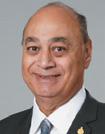


26 OCTOBER (2) 2019 www.indianlink.com.au VIRDI ENGINEERS ROOF RESTORATION Professional advice at the lowest price Serving the community for over 20 years Lic. No. 114274C Pay in easy interest free installments* *Conditions apply. Limited period only. Contact Harjit today! Call: 0412 254 015 Fax: (02) 9920 1044 web: virdiengineers.com.au Roof restoration Guttering solutions Whirly birds Driveway cleaning & painting Fencing & retaining walls Skylights Sunrooms Leaf guards Carports, decks, patios & pergolas ADVERTISEMENT Michelle Rowland MP FEDERAL MEMBER FOR GREENWAY 230 Prospect Hwy, Seven Hills Phone: (02) 9671 4780 Michelle.Rowland.MP@aph.gov.au www.facebook.com/mrowlandmp @MRowlandMP @MRowlandMP “Wishing you a bright and prosperous Deepavali” Michelle Rowland MP FEDERAL MEMBER FOR GREENWAY Authorised by Michelle Rowland MP, Australian Labor Party, 230 Prospect Highway, Seven Hills NSW 2147. Prue Car MP MEMBER FOR LONDONDERRY Greg Warren MP MEMBER FOR CAMPBELLTOWN Hugh McDermott MP MEMBER FOR PROSPECT Sophie Cotsis MP MEMBER FOR CANTERBURY Julia Finn MP MEMBER FOR GRANVILLE Courtney Houssos MLC MEMBER OF THE LEGISLATIVE COUNCIL Daniel Mookhey MLC MEMBER OF THE LEGISLATIVE COUNCIL Stephen Bali MP MEMBER FOR BLACKTOWN Edmond Atalla MP MEMBER FOR MOUNT DRUITT Jihad Dib MP MEMBER FOR LAKEMBA Guy Zangari MP MEMBER FOR FAIRFIELD We wish you and your family a joyful Diwali FROM JODI MCKAY AND YOUR STATE MPS HAPPY ADVERTISEMENT Jodi McKay MP Leader of the Opposition & Member for Strathfield
A joyous, festive mandala

How grandma helped Akhash Karthikeyan win this year’s Diwali Art Contest

Ten-year-old Akhash Karthikeyan of Pennant Hills NSW has won this year’s Indian Link Diwali Art Contest in the 8-12 years category.
Maanvi Dayal, 7, of The Ponds NSW has won the prize in her age category, Upto 7 years.
Both young artists take home book vouchers to the value of $75 each. Additionally, Akhash’s work will be featured on Indian Link’s annual Diwali card for 2019.
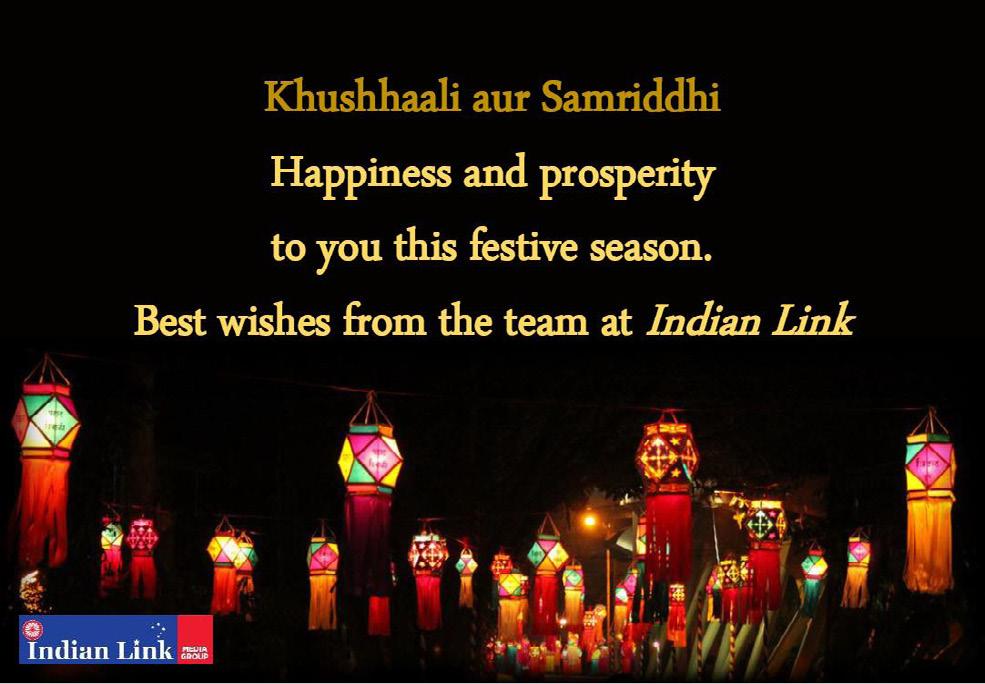
Avika Gurram, 10, of Holsworthy NSW and Saanvi Patnia, 7 of Ryde NSW were adjudged Runners-Up in their age categories. They win book vouchers valued at $50 each.
“I didn’t think I would win, so I was very excited to learn I was in the Top Ten, and really thrilled when I heard I had won,” Akhash told Indian Link.
His piece, bright and lively, impressed with its technique, choice of complementary colours and neatness of execution. The rangoli dots are a nod to his Indian heritage, and the floral quality a reflection of the spring season right here in NSW. Overall, it’s a pleasing mandala, light and airy, joyous and festive, with a unique Diwali vibe - that of a spring-time Diwali in Australia.
“My grandma who’s visiting, saw it in the newspaper and asked if I would like to enter,” Akhash revealed. “When I started the
artwork she guided me.”
Karthikeyan, Akhash’s dad, chimed in, “Mum has dabbled in art herself so she’s a great influence on the kids. She has made a few canvasses but her real forte is rangoli. It’s a lifelong passion at which she’s very highly skilled, having done some very large works
as well as the daily ones at home as part of her routine.”
Now we know where the rangoli dots in Akhash’s prizewinning work came from. His favourite subject at school is art, one of his
favourite school projects being the painting of a real surfboard.
“I also like reading, writing and craft,” he said.
What’s his favourite thing about Diwali?
“The lights and the firecrackers.”
Akhash spent a month in India last year during Diwali and got a first-hand feel of the Festival of Lights.
“Yes, we took him out of school for a month,” dad Karthikeyan said. “We came to Australia when he was four, and obviously he didn’t remember anything about Diwali. And so we thought he should experience it at our hometown Chennai.”
Congratulations to all the budding artists who entered this year’s Indian Link Diwali Art Contest: 152 submissions came in from all across Australia, many from children not of Indian origin.
For the first time this year, Indian Link saw group submissions from art schools and language schools, indicating the rise of community-level service providers for children.
Rajni Anand Luthra
OCTOBER (2) 2019 27 NATIONAL EDITION THE YOUNG ONES










28 OCTOBER (2) 2019 www.indianlink.com.au Happy Diwali Jason Wood Assistant Minister for Customs, Community Safety and Multicultural Affairs Member for La Trobe David Coleman Minister for Immigration, Citizenship, Migrant Services and Multicultural Affairs Member for Banks Scott Morrison Prime Minister Member for Cook Josh Frydenberg Treasurer Member for Kooyong Authorised by A.Hirst, Liberal Party of Australia, Cnr Blackall and Macquarie Sts, Barton ACT 2600. Wishing you and your family a THE X-RANGE OFFER… AND THEN SOME. COMPLIMENTARY STAMP DUTY… AND THEN SOME. COMPLIMENTARY CTP INSURANCE… AND THEN SOME. AND COMPLIMENTARY 12 MONTH REGISTRATION. Chatswood 676 Pacific Highway, Chatswood. Tel 02 9406 0888. northshorebmw.com.au DL26386 Mosman 261-263 Military Road, Cremorne. Tel 02 9056 8000. mosmanbmw.com.au DL26386 *Offer applies to selected new BMW X-Range vehicles ordered and delivered between 1 July 2019 and 30 September 2019, unless varied or extended. Cannot be combined with any other offer. Includes 12 month Registration, CTP insurance and stamp duty. Excludes dealer delivery. While stocks last. Excludes new BMW X7 (G07), new BMW X1, new BMW X6, new BMW X3 M, new BMW X4 M, fleet, government and rental buyers. Contact North Shore BMW for further details. Ravi Virwani Land line: 02 9406 0888 Mobile: 0421 876 584 ravi.virwani@nsbmw.com.au Available across selected new BMW X-Range vehicles until 30 September at North Shore BMW. happy Diwali Authorised by Julian Leeser MP, Liberal Party of Australia, 423 Pennant Hills Rd, Pennant Hills NSW 2120. Level 11, 423 Pennant Hills Road, Pennant Hills NSW 2120 02 9980 1822 julian.leeser.mp@aph.gov.au julianleeser.com.au julianleesermp JULIAN LEESER MP FEDERAL MEMBER FOR BEROWRA
When football dreams come true
Local boy gets to watch his hero up close at Jamshedpur FC
BY AYUSH
Coming to Australia as an international student from Jamshedpur in India, and to Sydney in particular, has been a dream come true. It's the hometown of my childhood hero Tim Cahill.
As a football aficionado, I would spend days and nights playing FIFA and PES. Cahill was the star-rated player with whom I started off my Ultimate Team in the game. As a Tendulkar equivalent for me, I would closely follow his games when he was at Everton, and as a Socceroo. (Who can forget his screamer against Netherlands in the 2014 World Cup).
Imagine my ecstasy when I heard that my favourite soccer player had been signed on by my own home team – Jamshedpur Football Club.
Back in the day when I would use his character to score goals in FIFA, I had never imagined that I would ever get to see him up so close.
Or get to know him in person, as I did during my stint as an in-house photographer with Jamshedpur FC.

Jamshedpur FC is the newest entrant in the Indian Super League, launched in 2017 by Tata Steel. Based in Jamshedpur in the state of Jharkhand, it is the first club in the Indian Super League to have its own training centre and player accommodation facilities, known as “Flatlets”, and its own stadium, JRD Tata Sports Complex, popularly known as “The Furnace”.
The news of Cahill’s arrival was greeted ecstatically by players, staff and fans of the club alike.
The players were excited about the opportunity to play in the same team as the Australian forward. Some of the youngest players who had grown up watching him, could not wait to share the dressing room with the superstar, hoping to learn as much as possible from him about the game. It was to be a huge learning experience for all the players of the Jamshedpur to play alongside one of the well-known faces of the sport.
The fans flocked to Jamshedpur Railway Station (Tatanagar Junction) to receive the team as it returned from its pre-season tour in Madrid, and escorted the team bus all the way home to The Flatlets, bursting crackers and playing dhols and nagadas along the way.
Soon the followers would set up fan clubs solely dedicated to Tim Cahill: they would occupy certain sections of the stadium chanting and cheering for the player while also displaying huge banners for him.
“As one of the most respected and famous players in the world, Tim is very down-to-earth and humble,” Prashant Godbole, the team manager, told me
once, speaking of his star player. “He always got along comfortably well with everyone in the team and was very polite and respectful to every individual he came across, be it a teammate or someone from the staff or the fans. He created an optimistic atmosphere in the dressing room and developed a good rapport with the team. With all the experience, knowledge and understanding of the game that Tim came with, he was successful in bringing out the best in everyone on the field.”
The players describe him as a person who they looked up to as their leader on and off the field, who would always keep them motivated to push their limits to improve themselves. Even on matchdays when Tim was not part of the playing squad, he would keep up the spirits of his teammates,
Mobashir Rahman and Gaurav Mukhi, local Jamshedpur boys, were always keen on learning more from the marquee man. Tim would provide extra care and attention to ensure that the young boys felt comfortable in the team and become a better version of themselves each day. Gaurav Mukhi, on scoring goals for the team, would always credit Tim for providing him with right inputs, during matches and in training sessions, on tips, tricks and techniques to become the lethal striker that he was striving to be.
Mobashir recalled, “I remember well the first day he arrived at the team camp in Madrid. He went around to greet and meet every member of the Club. I was very impressed by this gesture of his, as it talks about his extraordinary simplicity. He played an important role in building team
Although Jamshedpur FC missed Club’s debut season in the firepower in the final

quick passes, and was as good in front of the opposition goal as their defensive wall was. Known for his aerial ability, Tim Cahill was a weapon in front of the goal as he was spot on with his headers, scoring two magnificent goals by heading the ball in, even on being heavily marked by the opposing players. Jamshedpur FC had never won against FC Goa in the Indian Super League suffering heavy losses at their hands, but a much stronger and much fiercer squad with Tim, defeated them 4-1 in their home ground. This shows the impact the presence of Cahill had on the team as they could quite comfortably beat one of their toughest opponents.
Cahill led quite a disciplined life: when he was not training, he would hit the gym along with his physio and mate Cody, or swim and relax in the pool. Being a family man, off the field he would spend most of his time talking to his family. At other times he would play FIFA, poker or billiards and snooker with his teammates. He always made time for the fans, never refusing a photo or autograph. He learnt a few Indian words and phrases such as Namaste, Shukriya and Jam ke khelo so he could connect better with the local people. Every now and then he would express his gratitude to the fans for showering their love and support to the Club by posting pictures, messages and short vines on his social media handles. He loved sipping on Caramel Latte, and Chicken Korma with Naan was his favourite Indian delicacy. He was often seen visiting the mall in Jamshedpur and hanging out with his colleagues at cafes and bistros around the city.
Tim credits his teammate Karan Amin, one of the fullbacks at the Club, for influencing his tastes in Indian music. Karan introduced him to Indian rappers, with Divine becoming one of the artists he liked. Tim found a favourite song in the hit Punjabi number Daru Badnaam by Kamal Kahlon and Param Singh. He also liked watching Sacred Games, a hugely popular Indian web series on Netflix.
“Meeting him was unreal… I used to see him play in the Premier League when I was young,” Karan recounted. “He is very humble which is surprising for a guy of his stature. He always helped everyone on and off the field. There was never a dull moment when chilling out or training with him.”
He added cheekily, “I call him a legend, but I used to beat him in FIFA!”
Tim Cahill is and will always be one of the greatest persons ever to play on Indian soil and to have graced the Indian Super League. Jamshedpur is blessed to be added to the list of cities which have witnessed the phenomenal Tim Cahill’s signature celebration- punching the corner flag! He was more than just a marquee player at the Club, as he went beyond his way to extend support to his team, on and off the park, and promoted football in India by encouraging the development of local talent.

OCTOBER (2) 2019 29 NATIONAL EDITION
FIRST PERSON
Photos: fcjamshedpur.com







30 OCTOBER (2) 2019 www.indianlink.com.au masterton.com.au or 1300 44 66 37 Jim wouldn’t have it any other way ULTIMATE INCLUSIONS ‘Everything you’ve ever wanted in your new Masterton Home’ Send Money using Lotus Wire or eWire to India or Fiji ~ Special low fee $5
Loving right now
A list of Indian Link’s current favourites
READ
Meera Sodha serves a master class in her new vibrant plant-based cookbook, East. With veggies as the focus, Sodha presents here a fresh serving of novel recipes inspired by a range of Asian cuisines, from India, Indonesia, China, Singapore, Thailand and Vietnam. Easy to make, these eccentric recipes run the entire gamut from noodles to salads, curries to bakes, laksa to Kimchi pancakes and silken tofu. It’s modern, vibrant, fuss-free food for any foodie. A must-have whether you're vegan, vegetarian, or simply want to eat fresh, delicious plant-based dishes.

EAT
“Indian…ish, Modern…ish”. ISH at Fitzroy presents Indian flavours re-interpreted with Australian sensibilities. Owner Ganeev Bains, drawing inspiration from the vibrant dining scene of Chandigarh, gets together with Head Chef Michael Stolley to present a menu that pays homage to the culinary traditions of Indian food yet showcases the quality and variety of Australian produce. Indian origin whiskies sit proudly alongside Australian boutique wines, even as a Sambar Arancini shares space with Tandoori Australian king prawns and Tandoori Malai Broccoli. Other favourites: Victorian lamb cutlets, black garlic naan, King mushroom moilee and a special ISH butter chicken.

LISTEN
The ghazal is back. Ask Indian Link Radio presenter Samay, and he’ll probably say, but it had never gone away! On his nightly show Mehfil-e-Ghazal, Samay rekindles your love for this gentle artform with his inimitable andaz, dulcet tones and tenderness of manner. The playlist of loss and love, pleasure and pain, with interweaving sher-o-shayari, is carefully handpicked, and updated on listeners’ requests too. It puts you in a gentle frame of mind as you finish your chores for the day, and all’s well in your world as you end with a little hum yourself.

WATCH
In Aisi Taisi Democracy Rahul Ram (Indian Ocean band), angry satirist Sanjay Rajoura and popular lyricist/comedian Varun Grover illustrate a refreshing political-musical act full of satire, nitpicking all that’s wrong with the current system. As stand-up comedy, it’s a part-musical part-biting-diatribe on socio-political issues. It tackles a range of bold issues including sarhad (border) relations, chunav (election) analyses and social codes and mores, daring to pose some uncomfortable questions while keeping you in splits all along with its clever rehash of popular Bollywood tunes. Definitely not for those who get easily offended.
With contributions by Tejas Vaidya, Dhanya Samuel and Ekta Sharma

OCTOBER (2) 2019 31 NATIONAL EDITION CULTURE DIARIES
LATEST



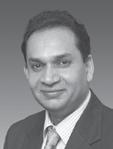
12 October | Term 4 Programs Commence:
Some of our popular Term Programs include:


Y5 Exam Preparation Program Ideal for Year 5 students preparing for Selective & Scholarship tests. Y11 Jumpstart HSC Success Series Programs

Ideal for Year 10 students preparing for HSC subjects.
• Newly revised content tailored for HSC SYLLABUS.


• ACCELERATE ahead of your PEERS.

• Taught by Fully QUALIFIED & EXPERIENCED teachers.

• Free HOMEWORK SUPPORT.


10 November | North Shore’s AnnualPresentation. Congratulations to our 2020 Scholarship Winners! We look forward to celebrating your academic achievements at our Annual Presentation.

32 OCTOBER (2) 2019 www.indianlink.com.au Australian Registered Migration Agents and Mortgage Brokers. We help with all your Australian and New Zealand Migration related enquiries. 1 S T C O NS U L TA T I O N FR E E!! ! C AL L NO W O N 0421 119 628 Our services Include: - Advice and Lodgement on Migrational Pathways - General skills Migration Advice Lodgement - Student Visa Advice and Lodgement - State Sponsored Visa/ ENS/ RMS/ TSS Advice and Lodgement - Business Migration Advice and Lodgement - Partner and Family Migration Specialist - Admission in Australian Colleges and Universities - AAT Review Procedures in Australia - Immigration changes introduced as of March 2018 - Permanent Skilled changes as of March 2018 - Temporary Skilled Visa Shortage Update CONTACTS: Syed Mohiuddin Director Ground Floor, 57 Macquarie Street Parramatta, NSW 2150 Mob: 0421 119 628, Ph: +612 8677 516 syedcompletems@gmail com syed@completemigrationservicesint.c Adil Mohiuddin Managing Director ound Floor, 57 Macquarie Street arramatta, NSW 2150 ob: 0413 553 140, Ph: +612 8677 5161 il@completemigrationservicesint.com.au NEW OFFICES Want to work, study & live in Australia or New Zealand? Contact us! We do the hard work for you! Migration Agents Registration Number www.mara.gov.au 1171248 New Zealand Entrepreneur Work Visa now available We also specialise in: Home and commercial Loans (MFAA International Money Transfer 1 S T C O N S U L T A T I O N FR E E!! ! C A L L NO W O N 0 413 55 3 14 0 OFFICES Migration Agents Registration Number www.mara.gov.au 1171248 1 S T C ON SU L TA TIO N FREE!! ! C AL L N O W O N 0 413 5 5 3 14 0 NEW OFFICES Migration Agents Registration Number www.mara.gov.au NEW OFFICES Migration Agents Registration Number www.mara.gov.au 1171248 1 S T C ONSU L TA T I O N FRE E !! ! C AL L NO W O N 0 413 5 5 3 14 0 NEW OFFICES Migration Agents Registration Number .mara.go 1171248 Syed Mohiuddin Director Ground Floor, 57 Macquarie St Parramatta NSW 2150 Mob: 0421 119 628 Ph: +612 8677 5161 syedcompletems@gmail.com syed@completemigrationservicesint.com.au Javid A Igder In-house Solicitor 1. Migration AAT and Court Matters 2. Criminal Cases 3. Family 4. Civil CANADA Permanent residency Contact: Priyanka Ajaykumar Former Employee of Canada Consulate General. 0435 549 106 NEW OFFICES 1 S TC O NSU L T A TI O N FR E E!! ! C AL L NO W O N 0 413 55 3 14 0 NEW OFFICES Migration Agents Registration Number www.mara.gov.au 1171248 SPEAK WITH US BEFORE ITS TOO LATE! SPEAK WITH US BEFORE ITS TOO LATE! CMS Int. offers full support with Federal Circuit Court and Federal Court Matters. We now have EFTPOS facilities available! (all credit cards and AMEX)Coaching College Tuition that Works! TUITION THAT WORKS! North Shore Coaching College prepares students for academic excellence and success since 1991. Est. 1991 Study with the best! Australia’s leading and largest tuition college, with over 65 campuses. PRE-SCHOOL - YEAR 6 PROGRAMS | OC, NAPLAN & SELECTIVE HIGH SCHOOL TEST PREPARATION YEAR 7 - 12 PROGRAMS | HSC | SCHOLARSHIPS | COMPETITIONS | www.north-shore.com.au Ashfield Bankstown Bella Vista Beverly Hills Blacktown Burwood Carlingford Campbelltown Campsie Castle Hill Chatswood Dee Why Eastwood Epping Gosford Hornsby Hurstville Kogarah Lidcombe Parramatta Randwick Rosebery St Ives Surry Hills The Ponds Wentworthville - 02 8065 4805 - 0425 171 324 - 0425 242 191 - 0432 810 282 - 0410 715 136 - 0410 816 186 - 0434 658 369 - 0422 564 943 - 0478 398 200 - 0450 480 991 - 02 9415 1860 - 0455 943 970 - 0455 747 480 - 0426 503 981 - 0401 744 551 - 0401 744 551 - 0478 398 200 - 0478 398 200 - 02 9649 2959 - 0478 841 982 - 0420 566 134 - 0411 763 758 - 0401 078 766 - 0403 076 636 - 0481 308 999 - 0423 284 406 - 0431 999 544 - 07 3343 1883 - 08 8123 1663 ACT QLD SA - 03 9898 9880 - 08 9328 8228 VIC WA NSW Campuses: PRINCIPAL CAMPUS: North Shore House 65 Archer Street Chatswood NSW 2067 Free Assessment & Enquiry: (02) 9415 1977 | (02) 9415 1860 | (02) 9415 1955 northshorecoachingcollege www.north-shore.com.au TERM PROGRAMS HOLIDAY PROGRAMS EXAM PREPARATION PROGRAMS ROBOTICS & STEM DEBATING & PUBLIC SPEAKING ENGLISH | MATHS | GA | WRITING PHYSICS | CHEMISTRY ECONOMICS | BUSINESS STUDIES
why thousands of students have thrived studying at North Shore Coaching College for more than 28 years. ENROL YOUR CHILD TODAY!
See
NEWS:
Easy Diwali
Oldies but goodies. With Diwali just round the corner, GAURAV MASAND is inspired to go back to some all-time favourites
Nutty Chocolate Bites
Who doesn’t love a good chocolate bite? These delights presented here are easy to make and store well for a few days too.
Ingredients
1 ½ cup cooking chocolate
½ cup cooking cream
¼ cupchopped nuts (almonds, walnuts) and raisins
¼ cup milk
1 tbsp cake sprinkles (optional)
Instructions
Dry roast almonds and walnuts in a pan for a few minutes. Add raisins and roast for a couple of minutes. Keep aside. Add the chocolate and cream to a double boiler. Stir continuously until they melt to a smooth consistency. (Alternatively, you may cook the cream and chocolate in the microwave for 10 seconds. Mix it
with a spatula and then again cook for 10 seconds. Repeat this process until the chocolate has melted.)
In a silicon mini muffin tray, pour the melted chocolate until it fills half the mould.
Add a spoonful of roasted nuts. Pour some more melted chocolate over this to the top of the mould.
Set in the fridge for 2-3 hours. Once it sets, you can remove it easily from the tray.
Add the remaining cream and milk to leftover chocolate to a pouring consistency.
Spread the chocolate bites on a grill, pour the melted chocolate on top. This makes it decadent and extra yum. You may decorate with some cake sprinkles and let cool for few hours in the refrigerator.

Baked Namak Para
Traditionally, these savoury delights are deep fried; here’s a healthier baked version.
Ingredients
1 cup maida/plain flour
½ cup atta/whole wheat flour
1/8 tsp. baking soda
1 tsp salt
1 tsp cumin seeds
Water to knead
¼ cup oil +2 tbsp oil for tossing
Instructions
Mix all ingredients and knead to a tight dough. Divide in two equal parts and roll out flat like a roti on baking paper. Use a knife or pizza cutter to cut into desired shapes. Place the pieces evenly on baking paper.
Preheat the oven for 5 minutes at 160 degree centigrade. Bake in a 160-degree fan forced for 20 minutess.
Toss the crackers in 2 tbsp oil and bake again for 15 minutes. Store in an air-tight container once it comes to room temperature.

Anardana Goli
This pomegranate candy is a wonderful pachak or churan, ie, digestive. It is a must, post that heavy Diwali dinner or brunch! This candy aids digestion and also gives a relief during motion sickness. Add as much or as little sugar as you wish.

Ingredients
½ cup anardana/dried
pomegranate seeds
1/8 cup amchur/dried mango powder
1 tsp black pepper
1 tsp kala namak/black salt
2 tsp cumin seeds
2 tsp fennel seeds
½ tsp cardamom powder
3 tbsp sugar
1 tbsp lemon juice
Instructions
Coarsely grind all dry ingredients, add lemon juice and mix.
Roll spoonfuls of mixture intoballs.
Optionally, coat the candies in some powdered sugar. Store in a dry jar.
OCTOBER (2) 2019 33 NATIONAL EDITION FOOD




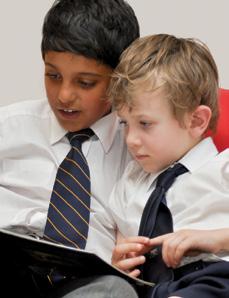
34 OCTOBER (2) 2019 www.indianlink.com.au *Price based on the Merricks 34 Alpine facade to the first 30 buyers at a special sales price available on new deposits from 7 September 2019 on Freedom by Metricon Homes only. Offer available to the first 30 contracts only in Sydney Metro, NSW North and South Coast build regions as defined on www.metricon.com.au/services/where-we-build. Not available in conjunction with any other offer. Not redeemable for cash or credit at contract. Excludes site and land cost. For detailed pricing and façade information, please speak to a New Home Advisor. Photographs may depict fixtures, finishes and features not supplied by Metricon such as landscaping and fencing. Accordingly, any prices do not include the supply of any of these items. NSW Contractor’s Licence 174699C. MORE HOME FOR LESS $ From 5 bedroom | 3 bath | 4 living spaces 298,800* BASED ON THE MERRICKS 34 ALPINE FACADE WITH FREEDOM BY METRICON HURRY - STRICTLY LIMITED OFFER 30 FIRST BUYERS ONLY metricon.com.au/freedom or call 1300 859 744 LIFETIME STRUCTURAL GUARANTEE BUILD WITH C ONFIDENCE BUILD WITH CONFIDENCE Himalaya Spice Centre Your one-stop spice shop 1 Station Street Thornleigh, NSW • 9481 8200 ‘You name it, we have it’ Himalaya Spice We offer: • Academic excellence, extended curriculum • Sa nskrit taught to all students • Mindfulness • Shakespeare, music, classical and modern languages • Vegetarian lunch provided in dining hall daily Talk to our Registrar today to arrange your personal tour John Colet School A co-educational multi-faith school for K–6, with engaged students inspired by enriched learning Enrolling Now for Kindergarten in 2020 and 2021. Openings in some other classes available Happy Diwali to our school families –past, present and future! JOHN COLET SCHOOL K-6 co-educational, multi-faith school 6 Wyatt Avenue, Belrose, NSW 2085 Telephone: 9451 8395 @JohnColet1 #JohnColetSchool www. johncolet.nsw.edu.au
Little India Fair to light up Wigram Street
In what is fast becoming a major highlight in the Indian Australian social calendar, Diwali is set to take over Wigram St in Harris Park once again this year on Sunday 19 October.
An initiative of the Council of Indian Australians Inc. (CIA), this popular street in Harris Park becomes a hub of all things Indian - yes, even more so than normal - as the street is closed down and the festivities of a street fair take over. With non-stop entertainment from 12 noon to 10 pm, the main stage will feature cultural performances, fork dances, and Bollywood showcases with over 300 performers. Of course the essential Diwali elements are also on the agenda: Lakshmi Puja and a mahaarti will be conducted in the evening (don’t miss the fire lamp procession) and fireworks at 10.00pm will end the program.
Event Director Shail Wadhwa told Indian Link, “We are excited that this year we have new segments by our supporting partners such as a live cooking show and a live Antakshari with shortlisted contestants!”

The Council of Indian Australians’ “Little India Fair 2019 (LIF19)” helps in fulfilling the vision of an inclusive Indian Australian community

while also building awareness and strengthening the business districts of Harris Park who are contributing to the success of this event.
Gurmeet Tuli, President of the Harris Park Business Forum, speaking on behalf of the various businesses in Harris Park welcomed the celebration of Diwali here in Little India.
Nitin Shukla, the President of CIA said, “We are proud to build and position Harris Park as the Little India of Sydney and stamp it on the map as an attractive tourist destination. We expect a huge turnaround on the day and my message to the people is to come and enjoy the spirit of Deepavali with your loved ones at LIF19!”
CIA acknowledges the support of title sponsors Dosa Plaza, Sharma’s Kitchen, platinum sponsor Indian Link, gold sponsors Ria Financial and National Australia Bank, and supporters Coles and Parramatta City Council.

The CIA team of President Nitin Shukla, Vice President Shail Wadhwa, Secretary Ashish Desai, Treasurer Keyur Desai, Joint Secretary Praful Desai, Public Officer Mohit Kumar, Sharda Shukla Executive Committee Members Stanley D’Cruz and Kedar Oza welcome the Indian community from across Sydney to this event.

OCTOBER (2) 2019 35 NATIONAL EDITION
@ ADVERTORIAL
IN TRANSIT
How you can get access to an Airport Lounge
BY PETRA O’NEILL
On my last trip, I spent several hours at Dubai Airport between flights. Tight connections leave me frazzled, so to reduce the stress of travel, I give myself plenty of time.
The best place to go to while in transit is an airport lounge. Here you’ll enjoy a comfortable quiet space, dedicated work area with free Wi-Fi where you can plug in your electronic devices, enjoy unlimited quality food and drinks, read complimentary magazines and take a shower to refresh and recharge.
Before booking your flights, I’d recommend that you narrow down your choice to the most direct route, quality of the carrier, cost, and the airport where you’ll be transiting. Check out its facilities and the airport lounges you can access.
While Singapore’s Changi Airport leads the way with the world’s best airport and a staggering array of attractions to keep transit passengers entertained - including the world’s tallest indoor waterfall - if you fly with Singapore Airlines, you’ll be eligible for a S$20Changi transit voucher that you can use for complimentary entry into the Ambassador Lounge, which makes transiting there even better.
Many airports though have upped the ante, offering a wide range of shopping and dining options, and while they might not offer vouchers, there are many other ways to gain access to an airport lounge.

BUY A DAY PASS
If you don’t fly often, single use pay-as-you-enter lounges are great value. And often prices are negotiable - so if you’re just after a shower, you’ll often pay less. Many airports have pay-as-youenter lounges. Plaza Premium lounges for example, are located at Kuala Lumpur, Singapore and Hong Kong airports.

PREMIUM CREDIT CARDS
If you’re a frequent traveller, you might want to consider a premium credit card for the perks and raft of benefits offered, that may include access to airport lounges around the world, irrespective of the airline you’re flying with. The American Express Platinum card for example, provides access to 1200 lounges worldwide, though the benefits of joining should be weighed up against the annual fee.
AIRLINE LOUNGES
Airline lounges restrict entry to members, guests of members, frequent travellers with elite status, business and first class passengers. Some airlines though, willallow you to pay for a single entry, so long as you’re a member of their frequent flyer

36 OCTOBER (2) 2019 www.indianlink.com.au TRAVEL
program. In Dubai, for example I could have entered the Emirates Business Class lounge with an economy ticket for US$100, or the First-Class lounge for US$210.
There are other ways too to get around entry restrictions. Some airlines will email you prior to departure and invite you to bid online for an upgrade. You could end up at the pointy end of the plane for a fraction of the fare, with lounge entry thrown in for free. Try with a bid of around 20 to 40% of the business class fare and you might be lucky. When my recent Garuda Indonesia flight from Bali was delayed, I didn’t mind at all. I continued to relax by snacking and reading the lounge’s magazines.
If you don’t fly often enough to have elite status, but stick to the one airline, you might consider paying to join the airline’s club. Membership of the Qantas Club for example, provides access to Qantas lounges and its partner airlines. Whether this is a good deal, depends on how often
you fly, with corporate membership costing less than individual membership.
And remember too that airline lounges are not created equal. At the premium lounge end are the rarefied spaces for first-class passengers, with sitting areas, napping areas, à la carte dining and highly personalised service that includes pressing your clothes.




There’s a broad variation between airline lounges in the quality of just about everything - décor, amenities, services, food and beverages, so it pays to read the reviews onsites such as Lounge Buddy beforehand. I’ve visited some great pay-asyou-enter lounges around the world and a few that were too busy, and didn’t offer much by way of amenities.
But most have been well worth it and with 3,000 airport lounges around the world, you might want to consider visiting one next time you fly.
OCTOBER (2) 2019 37 NATIONAL EDITION

38 OCTOBER (2) 2019 www.indianlink.com.au
OCTOBER (2) 2019 39 NATIONAL EDITION worldremit.com/diwali *T&Cs apply Light up their day No fees on your f irst 3 transfers* when you send money home this Diwali! Use code: 3FREE
cineTALK
two and half hours. It tends to make you restless.


SENSITIVE BUT SOPPY
The film scores on two counts, primarily. Despite being a maudlin shot at storytelling, it is never loses focus from what it intends to do to its target audience. The Sky Is Pink is credibly written and executed to that effect.
The second aspect is the cast. The acting is overall impressive. Priyanka Chopra's alpha mom act is far from perfect but, oscillating between vulnerable and resilient, she is effective in the way she plays Aditi.
THE SKY IS PINK
STARRING: Priyanka Chopra, Farhan Akhtar, Zaira Wasim
DIRECTOR: Shonali Bose
H H H
The statutory note first: don't forget a box of tissues. Sky, pink or white - take your pick in colour, but the tissues are a must, more than cola and popcorn.
The Sky Is Pink, Shonali Bose's most commercial film yet, rides exaggerated sentimentalism aimed to keep your tearducts working overtime.
With a star cast and budget bigger than Bose's past efforts - Amu and Margarita With A Straw - all of the above would make perfect sense. You can't possibly settle for anything less mainstream as a director with Priyanka Chopra starring in and co-producing your film. Bose's Sky was always meant to be Pink with pop cinema formulae rather than emerge as an effort that explores finer aesthetics.
Still, within the gamut of Bollywood mainstream, The Sky Is Pink registers
itself as one of the more sensitive attempts released this year. Much of that quality owes itself to an overwhelming true story on which the screenplay is based.
The problem is the creative crew does not seem in the mood to craft a nuanced plot and characters using the inspiring real-life account at hand. Rather, writer-director Bose and her co-scripters (Juhi Chaturvedi and Nilesh Maniyar) seem more interested in fashioning a functional, box-office compatible melodrama.
The story is narrated through the voice of Aisha Chaudhary (Zaira Wasim) who, we understand right at the start, is dead. Aisha's narrative introduces us to her mother Aditi (Priyanka), who the girl lovingly calls Moose, and her father Niren (Farhan Akhtar), who is Panda to her. Aisha has an older brother Ishaan (Rohit Saraf), dubbed Giraffe for his lanky frame. We also learn Aditi and Niren had another daughter before Aisha, who passed away as a newborn.

The Sky Is Pink tries to capture the

agony of a couple coping with the grave, incurable malady their daughter is afflicted with, which will draw her to inevitable doom. For Aditi and Niren, the trauma is all the more acute because they have already suffered the loss of one child before. Yet, they keep their spirits buoyant and fight against all odds to face every crisis coming Ayesha's way, as long as she is alive.
There is a sense of inevitability about the story, given its theme. And if this is overall a tale of despair, Bose struggles to find ways to alter that mood as the narrative flows. Stray, half-hearted attempts at humour flit past, as Aisha narrates the story. She informs us, for instance, with a wry note how her death has left Aditi and Niren's sex life in a mess. The mother's determined attempt to hook Ayesha up with a dishy boy she has a crush on, also makes for comic relief.
Most of the film, however, uses the largely flashback-driven storyline to generate schmaltz. Too much of overdone melodrama plays out over a runtime that seems too long at nearly
Strangely, for a story that allots big space to their romance, Aditi's chemistry with Niren isn't as engaging as you would expect it to be. The mush isn't quite pink for these two seasoned performers as a couple, although the scope would seem inherent somewhere in the plot. Also, in a story that unfolds through well over two decades, neither Aditi nor Niren seem to age convincingly. While on Farhan, he essays yet another trademark, understated performance. He seems more at home than Priyanka in imbibing the various phases of his protagonist's character.
If The Sky Is Pink aimed at being a slightly different brand of mawkish melodrama, the film's music team (Pritam's tunes on Gulzar's lyrics) is effective. The film has only two songs - Dil hi toh hai and Zindagi - and both numbers have been adequately created and utilised within the screenplay. For all its flaws, the film works for the simple moral science lesson it leaves behind: your loved ones matter most. Come to think of it, nothing regales the true-blue Bollywood buff than that sort of a message.
Vinayak Chakravorty
40 OCTOBER (2) 2019 www.indianlink.com.au
ENTERTAINMENT

OCTOBER (2) 2019 41 NATIONAL EDITION
The BUZZ ENTERTAINMENT
U P-TO-DATE NEWS ON WHAT’S HOT AND HAPPENING IN BOLLYWOOD
FILMS ABOUT WOMEN MADE BY WOMEN
Love, conflict, romance, old age and exploration of culture are some of the few diversified themes female filmmakers are set to bring to the 21st edition of Jio MAMI Mumbai Film Festival with Star.
Gitanjali Rao's Bombay Rose, Tanuja Chandra’s debut documentary Aunty Sudha Aunty Radha and celebrity stylist Sapna Moti Bhavnani’s Sindhustan are few such examples.
Bombay Rose is the story of a flower seller who has to choose between protecting her family and allowing herself to fall in love. The story is set on the streets of Mumbai and moves from real life to fantasy, accompanied by much-loved Bollywood songs. It is a chronicle of people who migrate from small towns, seeking minimal life in the maximum city.
Aunty Sudha Aunty Radha, which premiered at the Madrid International Film Festival, revolves around the lives of two widowed sisters, aged 86 and 93.
Sindhustan which premiered at New York Indian Film Festival 2019 winning the Best Docu-Feature award, is a fascinating exploration of the Sindhi community's migration to India narrated through a series of extensively designed body tattoos, all of which are illustrated on Bhavnani's body. Through the documentary, Bhavnani attempts to also dwell into her roots and the history of the Sindhi community.
AND WHILE STILL ON WOMEN’S FILMS…
Meanwhile, there have been at least a couple more women-centric films that have been creating a bit of buzz lately.
TO BALDLY GO WHERE…
It’s a rare sight to see lead actors in Hindi cinema shave-off their head or wildly experiment with their hair. Joining the ranks of Bruce Willis and Jason Statham, National Award-winning actor Ayushmann Khurrana will be seen in a bald avatar in his new film Bala. Directed by Amar Kaushik, Bala narrates the plight of a young man who suffers from premature balding.

Talking about the film, Ayushmann boldly said, "In an era of great content, Bala will stand out and will hopefully entertain everyone in this country. It's one of my best films and I'm supremely proud that it is part of my filmography. Expressing his love for the script he
said, "I was bowled over as soon as I read the script. It's funny, satirical and emotional at the same time. It has its heart at the right place."
According to Ayushmann, Bala will convey a meaningful message to the audience.
"This film has everything for good cinema lovers and I can guarantee that they will find it a total paisa vasool entertainer that's also socially relevant and extremely thoughtful at the same time. It will deliver a very thoughtprovoking message while delivering quality entertainment to audiences.’
The film, which also stars Bhumi Pednekar and Yami Gautam, is scheduled to release on 7 Nov.
For starters, we have celebrity chef Vikas Khanna's debut directorial feature The Last Color. Featuring Neena Gupta, it deals with the taboo surrounding widows in certain parts of India. A 9-year old tightrope walker befriends one such widow and promises to bring colour to her life. The film, adapted from Khanna's own book The Last Color, film recently won Best Feature Film at the Indian International Film Festival of Boston (IFFB).
Then there’s Saand Ki Aankh, starring Bhumi Pednekar and Tapsee Pannu, who play the world's oldest women sharpshooters, sister Prakashi and Chandro Tomar. Based in Haryana, it will once again get us to query how the most backward state in India for women’s empowerment, continues to produce the nation’s most feted sportswomen.
PRABHUDHEVA: NEW COP IMAGE FOR SALMAN
The swag-saga of Chulbul Pandey continues in Prabhudheva’s Dabangg 3, while Prabhudeva has already plunged into directing the superstar in another project for his production house.
What's more, Salman plays a cop in both
the films.
"It has to be a completely different character. Otherwise, the audience will say we are repeating. We are working on it. The target is Eid and we will make it on time. I work fast," said Prabhudheva, currently on a two-day break in Chennai to meet his sons.
Prabhu has been a favourite with Salman ever since they worked together as director and actor in the 2009 Eid blockbuster Wanted. He says Dabangg 3 is going to please Salmaniacs.
"It is a typical Salman Khan film. Doing a Dabangg film was a challenge to me. I was new to the Dabangg universe. Everyone else (in the unit) had worked in the first and second parts of the series. Of course, I had seen both the earlier films. So, I made an effort to get into the groove. Luckily for me I didn't fall flat," he said.
Because of the double commitment, Prabhu doesn't get to spend much time with his children. "I hardly get time to be with them. I enjoy working and I need to work to ensure their future. But I also need time to be with them," said Prabhu.
AR RAHMAN: MUSICIANS IN CONTROL

Always drunk, and dead at the end. That’s your typical musician stereotype in movies. And AR Rahman is having none of it.
"If you look at our iconic movies, they are all losers, like A Star Is Born, or they commit suicide,” said the Oscar and Grammy winner. “Inside Llewyn Davis, he gets thrown out by his sister. Why this stigma?”
Incorrect portrayal, ARR says.
“Why can't we make something about a success story? Not just success story, but also the internal war which a creative person faces.”
Erm, you talking about yourself, ARR?
You are, after all, the epitome of balance and harmony, none of that ‘turmoil’ stuff for you…
Rahman has recently wrapped up work on upcoming film ’83. He admitted to have gone through an extensive auditioning
42 OCTOBER (2) 2019 www.indianlink.com.au
NEENA
AR RAHMAN
process with casting director Mukesh Chhabra before choosing debutant Ehan Bhat and Edilsy Vargas as the lead singers.
The composer is returning to the Hollywood scene with the Netflix series Pashmina. In India, he is working on Bigil and Dil Bechara, the Indian remake of The Fault In Our Stars.

No doubt we’ll see some happier feels in his new works too.
TAMIL CINEMA WELCOMES IRFAN, HARBHAJAN
From dressing room to vanity vans, former Indian cricketers Irfan Pathan and Harbhajan Singh are all set to make their big screen debut in Tamil cinema.
While Irfan will be seen essaying a prominent role in a film starring Tamil superstar Vikram, Harbhajan will make his debut in a Santhanam film titled Dikkiloona.
The Vikram film, which will introduce Irfan Pathan to the big screen, is tentatively titled Vikram 58. It is directed by Ajay Gnanamuthu, who is known for films like Imaikka Nodigal and Demonte Colony.
"Welcome on board @Irfan Pathan. Can't wait to unleash your new avatar to the audience! Time for some solid action!!" tweeted the film's director Gnanamuthu, along with a picture of himself with Irfan.
The producers of the film tweeted confirmation that Irfan was on board. "Proud and honoured to introduce @ IrfanPathan in #ChiyaanVikram58 in a
WHO WORE IT BETTER?
JANHVI KAPOOR OR MARIA MENOUNOS IN MARIA LUCIA HOHAN?


super stylish action avatar!! Welcome on board sir and wish you a sensational debut," read a tweet by co-producers Seven Screen Studio. Vikram is known as Chiyaan to his fans.
AR Rahman has scored the music for Vikram 58. Filming will begin soon, and will be done across various parts of India. Sivakumar Vijayan is helming the film's camera work.
On the other hand, Harbhajan's debut Tamil performance happens in Dikkiloona, which stars Santhanam and is directed by Karthik Yogi.
Incidentally, both Irfan and Harbhajan have a Chennai connect, having played for the IPL team Chennai Super Kings.
DIGITAL PLATFORMS AS BOLLYWOOD PROXY



Comic series, serious dramas, justfamily watch or bingeworthy nail-biting scripts; the digital platform has opened up avenues for young actors for whom penetrating Bollywood is not as easy as star kids, and television offers a limited scope.
One such actor is Mrinal Dutt, a Delhi boy with a characteristically typical story of moving to Mumbai and who has now garnered praise for his performances in web series such as Coldd Lassi Aur Chicken Masala and Hello Mini.
"Both film and TV offer limited scope. As an actor I have always wanted to work in stories that are not just the daily drama type. The story should be well written, compact and should not be
dragged endlessly like daily soaps," said Mrinal.
His latest show is the MX Player web series Hello Mini, an erotic thriller based on Novoneel Chakraborty's novel Marry Me Stranger of the Stranger trilogy.
Talking about his character, the actor revealed: "I play a guy who comes from a dysfunctional family. He decides to become an actor and comes to Mumbai. In the process, he meets the protagonist Rivanah Banerjee. How they fall in love and what happens next in their lives, and the madness and chaos that follows, is what the show is about."
On the work front, Mrinal Dutt will next be seen in the Netflix film Upstarts and the MX Player web series Pavan Pooja.

ON TWITTER THIS WEEK
Match the following stars to the tweets below.
Amitabh Bachchan, Deepika Padukone, Ayushmann Khurrana, Tapsee Pannu Here it is... our labour of love ... But this one is dedicated to all the mothers.... #SaandKiAankh
And seven years on nothing has changed
My immense gratitude and gratefulness to them that send their wishes for the 11th... I cannot possibly thank each one individually... but each one of you reside in my heart... my love to you. Anek anek dhanyavaad
Baal kaisa hai janaab ka? Trailer dekho aur batao, kya khayaal hai aapka!
OCTOBER (2) 2019 43 NATIONAL EDITION That she is this year’s Halloween Diva! Sweta Shah Congratulations Sweta! You win a movie ticket. CAPTION CONTEST WIN MOVIE TICKETS! What is Aishwarya Rai Bachchan thinking here? What’s the chitchat here between Alia Bhatt and Kareena Kapoor Khan? Send your response to: media@indianlink.com.au TO WIN A MOVIE TICKET! LAST ISSUE CAPTION CONTEST WINNER
+ Share your views with us on our Facebook page /IndianLinkAustralia
For more caption entries, see YOUR SAY Page 11
NEENA GUPTA
TAPSEE PANNU
SALMAN KHAN
Photo credits: masala.com, mlh-shop.com
Dealing with Diwali blues

A quiet, lonely Diwali can still be a happy Diwali
BY SHANIA O’BRIEN
Living away from home during the pujas is particularly hard for me, as I assume it is for every Indian in a similar situation. It doesn’t matter how far away you are because the honed familiarity of the puja season routine never fails to make you feel like you’re home.
The first thing is always being forced to spend time with relatives I wished would move to Canada already. I used to anxiously await their arrival, sitting in my itchy kurta, customer-service smile plastered on my face. I would always dread it and count down the moments until I could go out into the sun and take pictures. But I find myself missing the drama that comes with customarily required family reunions, and accept that the only drama I will be involved in this year is the long list of SRK movies I will be re-watching, alone, in my room.
Another important aspect of Diwali is the fashion. The sarees and lehengas and kurtas, bindis and polkis and mehendi. Usually, I would find myself walking M Block Market in GK (New Delhi), scouting
out the best mehndi artists. It was always an adventure, always a gamble, the thrill of choice between endless versions of the same peacock. This year, I bought little packets of mehndi from an Indian store in Parramatta, and will hopefully be able to design simple mandalas on my left
hand. I plan on practicing on other people first, obviously, turning them into my test subjects under the guise of homesickness. Who would deny a homesick girl some happiness at the cost of an uneven design that would wear off in a week?
I am not allowed to make a rangoli
MATRIMONIALS
SEEKING GROOMS
Beautiful, highly educated girl with very good family background, soft spoken, careeroriented 33-year-old vegetarian Brahmin, working, well settled in Sydney, seeking an educated match, teetotaller with good family background. Prefer Australian citizen or PR. Please contact rajsyd83@gmail.com
Seeking a suitable match for our 25-yearold daughter, working as a junior doctor in NSW. Boys from a similar academic background or qualified professionals based in Australia are preferable. Please contact ajaygupta101@hotmail.com or +919329666301
Seeking professionally qualified settled match for Sydney based, never married Aus citizen, Hindu Punjabi Khatri, 46, 5'3" slim, fair,attractive girl. Girl is postgraduate and is working on a good position in government organisation.

Please send details with photo to Indsyd2016@gmail.com.
Seeking groom for my niece, beautiful, 30, 5’ 5”, fair, pleasing personality, Management Consultant in Ernst and Young, Singapore, caste no bar. Only child in family, both parents are doctors. Seeking responses from ‘never married’ only. Please contact lalitm67@gmail.com, phone: 0411 058 064
SEEKING BRIDES
Seeking professionally qualified settled match for Sydney based, never married Aus

outside my room because of the carpeted flooring. I will have to settle for a handdrawn design stuck on my door to welcome Laxmi into my humble abode. I thought this was celebrating Diwali the wrong way, and someone would come and chastise me for ruining the festival. There are so many traditions I feel like I am flaking on without a good enough excuse, but a lot of living by yourself is about compromise. Technically, I will not be celebrating Diwali. I can go to the Indian student union’s Diwali ball and dance to Gal Mitthi Mitthi and call it a day, but where is the tradition in that? Where is the stress that is caused by my little cousins sitting in my room with gulab jamun juice dripping down their chins? Where is my broken heel, my faulty zipper, my empty bottle of white rangoli powder?
In my experience, a lot more goes into Diwali than those seemingly trivial things, the most important of which is all the love that is celebrated. Diwali is the festival of lights, and I like to think that relates more to the light we nurture and share as a society than the incessant burning of firecrackers and fireworks. And I know that no matter where I am, and no matter how many times I’ve watched DDLJ, I am celebrating Diwali the right way because my spirit is in the right place.
citizen, Hindu Punjabi Khatri, 45, 6', and athletic built man. He is project manager with engineering background and is working in a private organisation.
Please send details with photo to Indsyd2016@gmail.com.
Seeking match for educated man, well settled with own home in Sydney, working with NSW state government, divorced, 5’9", 39 years, Australian citizen. I am looking for suitable match from Sydney who wants to settle-down with easy life (can enjoy worklife balance). Interest invited from Student Visa Holder/PR/Citizen/Divorcee/Single.

Contact: 0490 970 281 or SMS/ WhatsApp basic details or send biodata to patelbrij1980@gmail.com
Seeking match for educated, divorced, 5’9', 1975 born Sikh man, self-employed, on bridging visa with full work rights. Looking for PR/citizen match from Australia. Phone: 0422 812 939 or email: jas_ghai01@hotmail.com
Seeking match for 34, 6' Tamil Hindu man, IT professional, working for a top organisation in Sydney. Possess PR Visa. Girl should be Hindu preferably citizen/PR. Please send profile to aravind7778@gmail.com
Match for Aggarwal man, 34 6’1", never married, has a financially adopted child, Ph.d in Nephrology working as Medical Scientist in LA, USA. Father retired GM from Reliance Industries India.Sister well settled in Sydney with her family.
Can relocate to Australia if needed. Caste no bar. Ph:+61423104499
44 OCTOBER (2) 2019 www.indianlink.com.au BACKCHAT
VISIT LIFEJACKETWEARIT.COM.AU CHOOSE TO WEAR A LIFEJACKET OR CHOOSE TO RISK IT ALL TNSWJS0010_Lifejackets_170x122mm_V01.indd 1 15/10/19 9:03 am
Riva is a beautifully reinvigorated building with extensive renovations completed on all apartments. Rising 12 levels, Riva offers the largest apartments in the area, being approximately 20% larger than those in neighbouring buildings and features a vast range of layouts including studios, dual key and split level apartments with dual aspects and multiple balconies.
Set in a premium riverfront location with direct access to the Parramatta Ferry Terminal, and just 600m from the train station and future light rail stop.
Built by Australia’s largest apartment developer, Meriton gives you peace of mind that your home will be a long-lasting investment.

OCTOBER (2) 2019 45 NATIONAL EDITION meriton.com.au/riva Greg Misdanitis 0415 285 711 Enjoy spectacular district views over Parramatta River and city glimpses in a place where everything you need to live well is on your doorstep. REGISTER YOUR INTEREST NOW DISPLAY CENTRE COMING SOON PRICES STARTING FROM $440,000 BE IN THE CENTRE MOVE IN BY THE END OF 2019

46 OCTOBER (2) 2019 www.indianlink.com.au







OCTOBER (2) 2019 47 NATIONAL EDITION
• Expert Teachers: Educators from top schools, Advanced Degree/PhDs, and HSC top achievers
• Courses: Maths (Adv, Ext I & II), Physics, Chemistry, Biology, Economics, Adv. English

• Flexible Learning: Class, 1-1 Tutorials | Accelerated Holiday Courses | Online resources


48 OCTOBER (2) 2019 www.indianlink.com.au 2019/2020 ACADEMIC ENROLMENTS NOW OPEN MEDSTART UCAT PREPARATION $100 OFF - Enrol before 2 November 1300 999 100 | talent-100.com.au | Chatswood | Epping | Hurstville | Burwood | CBD EPPING | CHATSWOOD | HURSTVILLE BURWOOD | SYDNEY CBD
WEEK OBLIGATION FREE TRIAL MULTI-SUBJECT DISCOUNTS 5% off 2nd subject 10% off 3rd+ subject FREE YEAR 11 ECONOMICS TERM 4 ONLY - Any new student New SYDNEY CBD CENTRE OPENING 20% OFF ALL ENROLMENTS DIWALI SPECIALSBOOK NOW!
2





































































 Rajni Anand Luthra
Rajni Anand Luthra






































































 Clinton Fernandes, Professor of International Relations, UNSW
Clinton Fernandes, Professor of International Relations, UNSW















 By Nick Sharma
By Nick Sharma

 By Sanjay Patel and Emily Haynes (illustrated
By Sanjay Patel and Emily Haynes (illustrated

 By Jatinder Nath Verma
By Jatinder Nath Verma





 By Deborah Heiligman
By Deborah Heiligman









































































































































































